
THE BULL Pierce College’s student-run magazine Passion ISSUE FALL/WINTER 2010

Talk Derby To Me Cheers Jeers & Beer Welcome to Hollywood Ms. Zen From needle to paintbrush Out of the dark into the blacklight How to find a soulmate Pop! Goes her heart for Kpop The Biggest Kid Animals above all Waiting for Mickey The Anatomy of Passion Contents 3 7 11 14 17 20 21 26 27 29 9 Cover & Contents photo by Amber-Rose Kelly 23
Helen Ramirez
Editor-in-Chief
Tyler McGee
Managing Editor
Amber-Rose Kelly
Photography Editor Staff Editors
Tatia Calhoun
Laura Corral
His rugged, shaking hands caress her dainty neck as he digs deep into her lacy, creamcolored shirt. Her world blurs as she feels his delicate touch inching near her fast beating heart. Electrifying chills run down his spine as she forcefully unbuttons his shirt. Their fiery eyes meet as their craving bodies inch closer and closer together.
He inhales – she exhales.
It all happens so fast. It just takes one look. One kiss, and we’re hooked. It’s like a tornado of burning emotions, passion rushing through our bodies turning our dull black and white days into a massive array of vibrant colors. It’s ironic that a tornado could set you on a new path, your very own yellow brick road to self-discovery.
Along this path, we encounter many crossroads where passion takes different forms.
Letter from the Editor Helen Ramirez
Portia Medina tells the story of an ambitious upcoming artist who has overcome the twisting road of addiction. Kori Kim paints a similar picture of a local tattoo artist who faced a parallel highway, but finds his passion along his route to sobriety.
Crossing over to the fast lane, Laura Corral explores the world of roller derby as she follows the driven owner of the L.A. Derby Dolls. A sudden jolt in the engine helps ease our entrance into a land of toys. Coburn Palmer takes us to a place where you never have to grow up. Here we meet a corporate burnout who turns to his love of toys and becomes the big kid on the block.
This is where our roads diverge. Take a detour from your everyday to look through the passionate routes that others have taken. You might still be searching for you passion or maybe you’re just scared to put yourself out there. Whatever your situation may be The Bull is here to inspire.
Vineree Dorin
Gary Moratz
Mandi Prince
Lorrie Reyes
Writers
Gina Cantrell
Denise Jimenez
Kori Kim
Portia Medina
Coburn Palmer
Designers
Anibal Ortiz
Jeff Sandstoe
Natalie Yemenidjian
Photographers
Joshua Cowan
Louie Heredia
Joseph Kukuczka
UD
Advisers
Amara Aguilar
Jill Connelly
Lead Translator
Florencia Orlandoni
Translators from the Latin American Culture & Literature Club
Luis Enrique Barco
Rodrigo Carbonel
Checo Fernandez
Karla Hinojosa
Sandy Moreno
Aubrey Portillo
Anayeli Villanueva Cruz
Special Thanks
Edgard Aguilar
Stefanie Frith
Fernando Oleas
Rob O’Neil
Laura Gonzalez
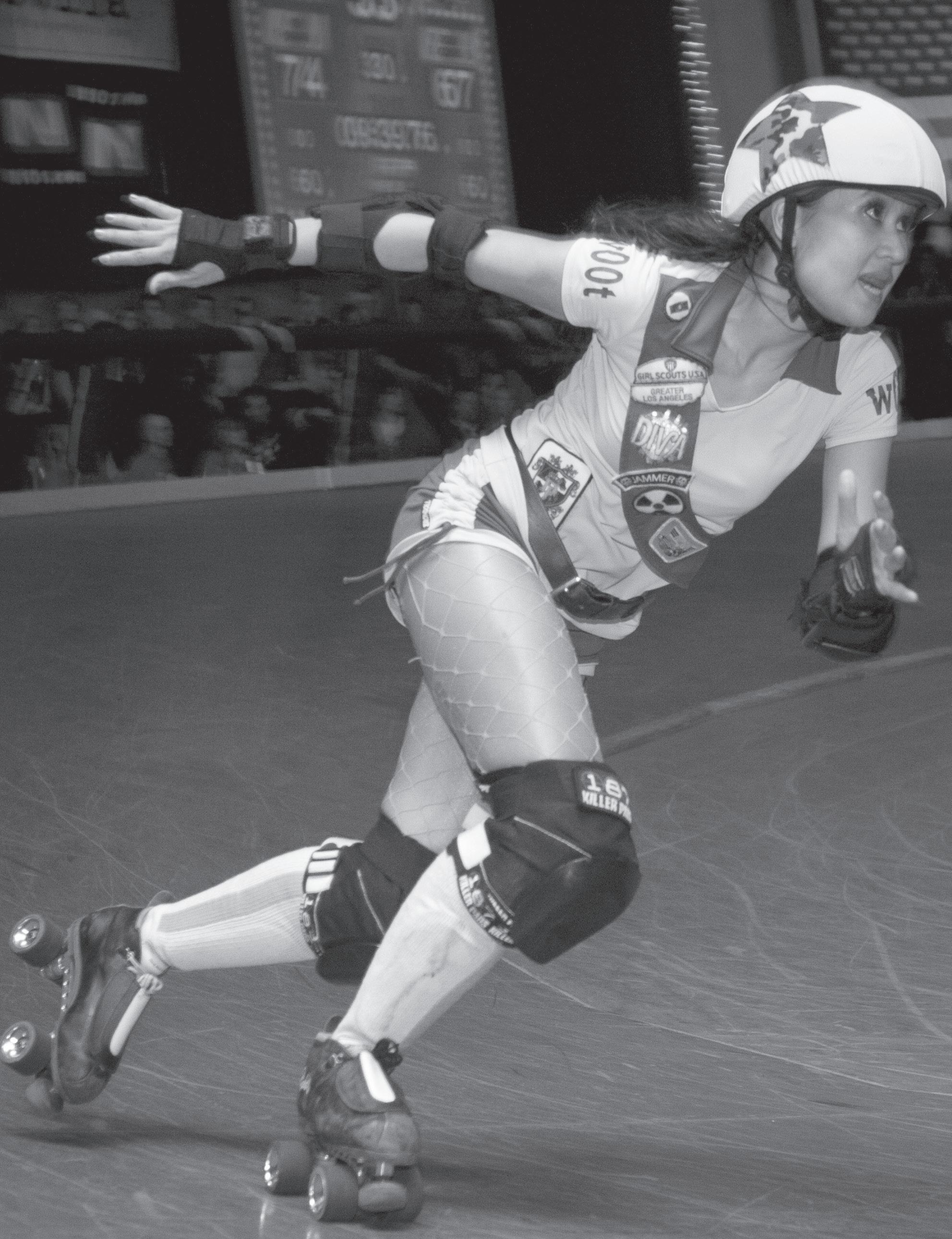
3
Talk
DERBY To Me
Rebecca Ninburg and her Dolls are redefining feminine, one body check at a time.
It’s a Saturday night, and I find myself in a packed warehouse in Downtown LA.
There’s music of the post -punk genre blaring and the place smells of stale beer and sweat.
Tattooed women in Cyndi Lauper circa 1980s attire and roller skates are gliding around. Suddenly the lights turn dim. A spotlight showcases the center of the large banked-track that’s in the middle of the warehouse.
On the track are more gals with intriguing attire, torn fishnets and skates. But they’re different from the others. They are adorned with helmets, knee
pads and wrist guards. They look tougher and wear the image of determination on their faces. A 40-something man leans in towards me to tell me about his favorite skater. “See her?”, he says with a sly grin. “That’s Krissy Krash, she gives bitches stitches”. This man and the legion of loyal fans surrounding us are here to support the Los Angeles Derby Dolls, the all-female roller derby league of Los Angeles. Roller Derby was officially created back in the 1930s by a man named Leo Seltzer. At first, derby leagues were co-ed, but Seltzer soon realized that audiences enjoyed the all-female leagues
Story by Laura Corral
best. Fast forward 70 years and all-female roller derby is still as popular as ever. The L.A. Derby Dolls were created in April of 2003 by Rebecca “Demolicious” Ninburg and Wendy “Thora Zeen” Templeton and they have been selling out tickets for their bouts ever since.
A couple weeks following the attendance of my very first Derby Dolls bout, I once again find myself at the warehouse or as the Dolls call it, The Doll Factory. It seems so different now. There are no loud cheers from the rowdy crowd that once occupied its seats and there is no loud music playing in the background.
Instead, there are echoes of conversation and the screeching sound of skates coming to a halt. For someone who’s created a team of hard hitting derby athletes, Ninburg is quite unassuming.
She has perfect blonde hair, wears black-rimmed glasses and looks more savvy businesswoman than roller derby queen. Her office is filled with derby memorabilia. On the wall hangs a large poster of “Kansas City Bomber”, the 1972 derby themed flick starring Raquel Welch.
A former sculptor, Ninburg begins to talk about her early days involving derby. “ I was sculpting and my friend was painting and she brought roller skates to work one day,” says Ninburg. “That’s when we began talking about roller derby.”
“At the time I was just sick of commercial sculpting. I was looking for more meaning,” she says. Ninburg found her remedy for more meaning in life with the idea of starting a roller derby league.
“You get sick of having ideas and not following through with them, so I said, okay, I’m going to stick with this idea,” she says. “ I promised myself that and that was 7 years ago.”
The road to obtaining the popularity that the L.A. Derby Dolls have now wasn’t an easy one. Derby had hit it’s peak of popularity back in the 1970s and had pretty much died out in the 80s and 90s. Even

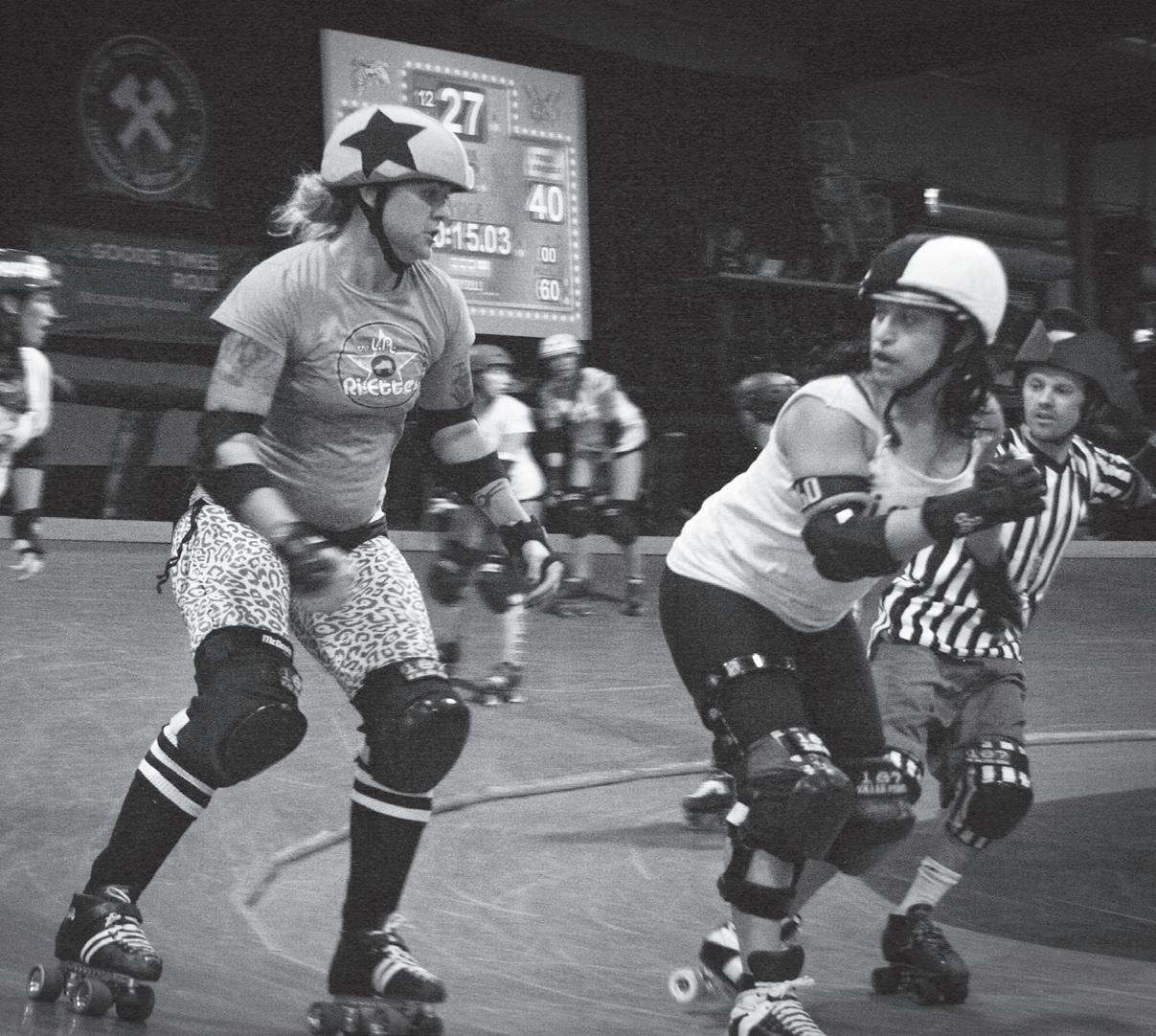
says.
“Neither of us knew how the game was played, we went to roller rinks and started asking people about roller derby.” Ninburg was determined to bring roller derby it’s popularity back and it was at a time when few people followed the sport or even knew what it was. “I was well aware of the fact that it hadn’t manifested itself in a long time,” says Ninburg. “At a certain age you’re like, what happened to that sport?
though Ninburg and her band of aspiring derby skaters didn’t know much about derby or skating in general, that didn’t stop them from trying. “ We didn’t know how to skate or about any other leagues.
I skated like anybody skates when they’re a kid, like, I could do the Hokey Pokey and let’s just say that was the limit of what I could do,” she
Women were equal to men, it was so bad-ass, what the hell happened to that?”, she says. “ We were like, damnit, nobody else is doing it, we should just do it.”
Ninburg, Templeton and derby enthusiasts who wished to be part of the reinvention of the sport set their sites on a place to practice their skating. “ We moved around a lot from place to place. We started on a rooftop in Chinatown, then we moved into a building,” says Ninburg. “ We skated at Skateland
“Women were equal to men, it was so bad-ass, what the hell happened to that?”–Ninburg
Derby Dolls owner, Rebecca Ninburg. Photo by Joseph Kukuczka Kristen “Krissy Krash” Adolfi, left and her opponent. Photo by Amber-Rose Kelly
in Northridge and they didn’t like us,” she says. “ They would have Christian night skate and they just didn’t like who we were, they assumed we were a certain way, they didn’t realize we were civic minded,” she says. “ I think to survive in this world you have to make assessments quickly of everybody, so people get grouped and categorized.” The Dolls not only skate, they also participate in many community events and have even hosted a health fair. “ There used to be a preconceived notion of who we are and I don’t think we get that at all anymore,” says Ninburg. “People are taking the time to get to know who we are and I think it’s because all of the work we do in our community.”
Ninburg’s passion for derby wasn’t just about the sport itself but rather an ode to being a powerful woman. “ If you can really find what is compelling you and why I’m here is because it’s the first time in Women’s history where we have
the opportunity to have our own full-contact sport. We’ve never had our own contact sport,” she says. “We’re not following the paradigm of a male sport. It’s not necessary for us to put a “W” in front of it, which inherently kind of gives it this second-class stature sport if you put a “W” in front of it.” Derby wasn’t only just a way that women could prove to be
tough, but it was also a way to blow off steam and be somebody else. One of the most unique traits of the sport is that each player gets to have their own “stage name” or persona. “ I remember as a kid roller derby skaters always had sort of a nickname. That was one thing I remembered, so it was like, ‘oh, I want a bad ass nickname’,”
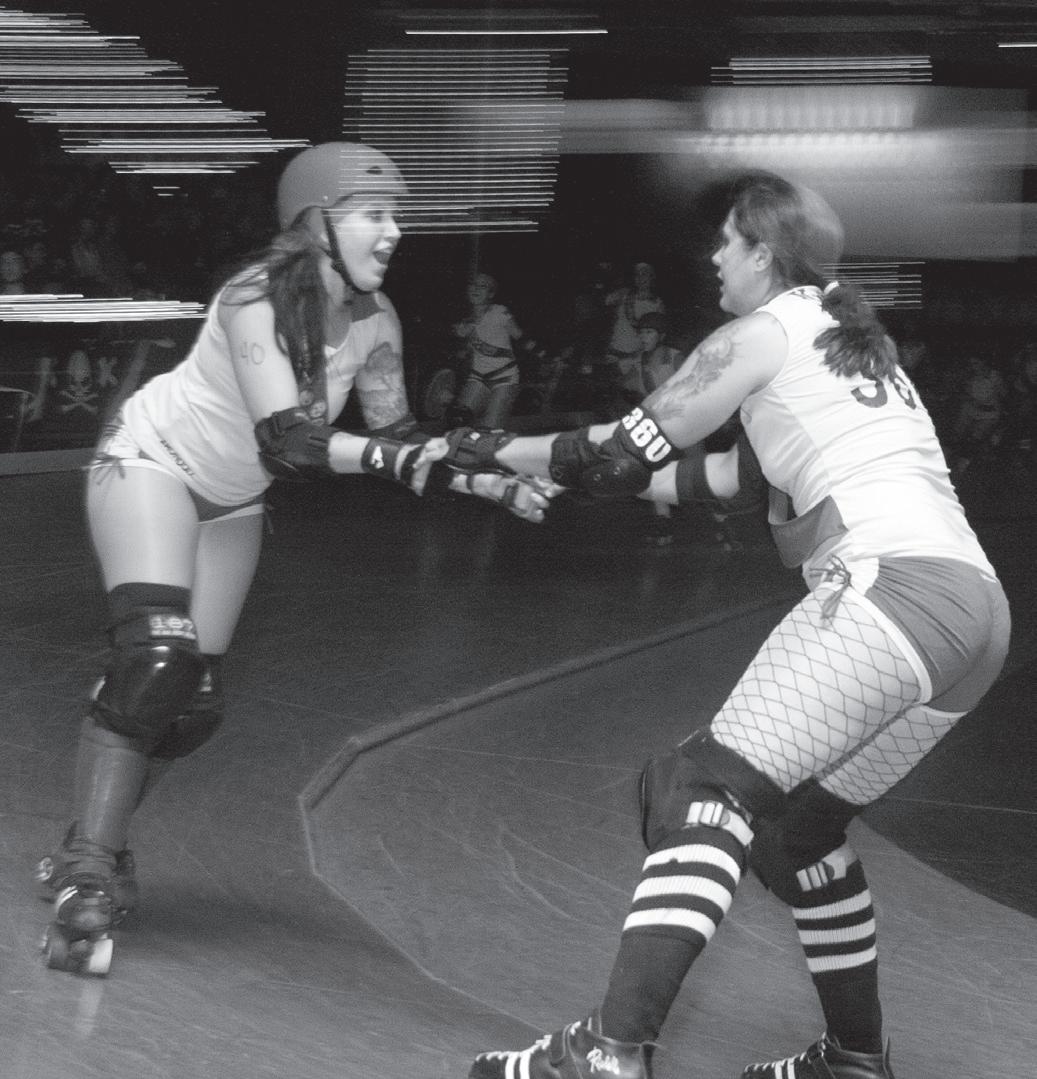
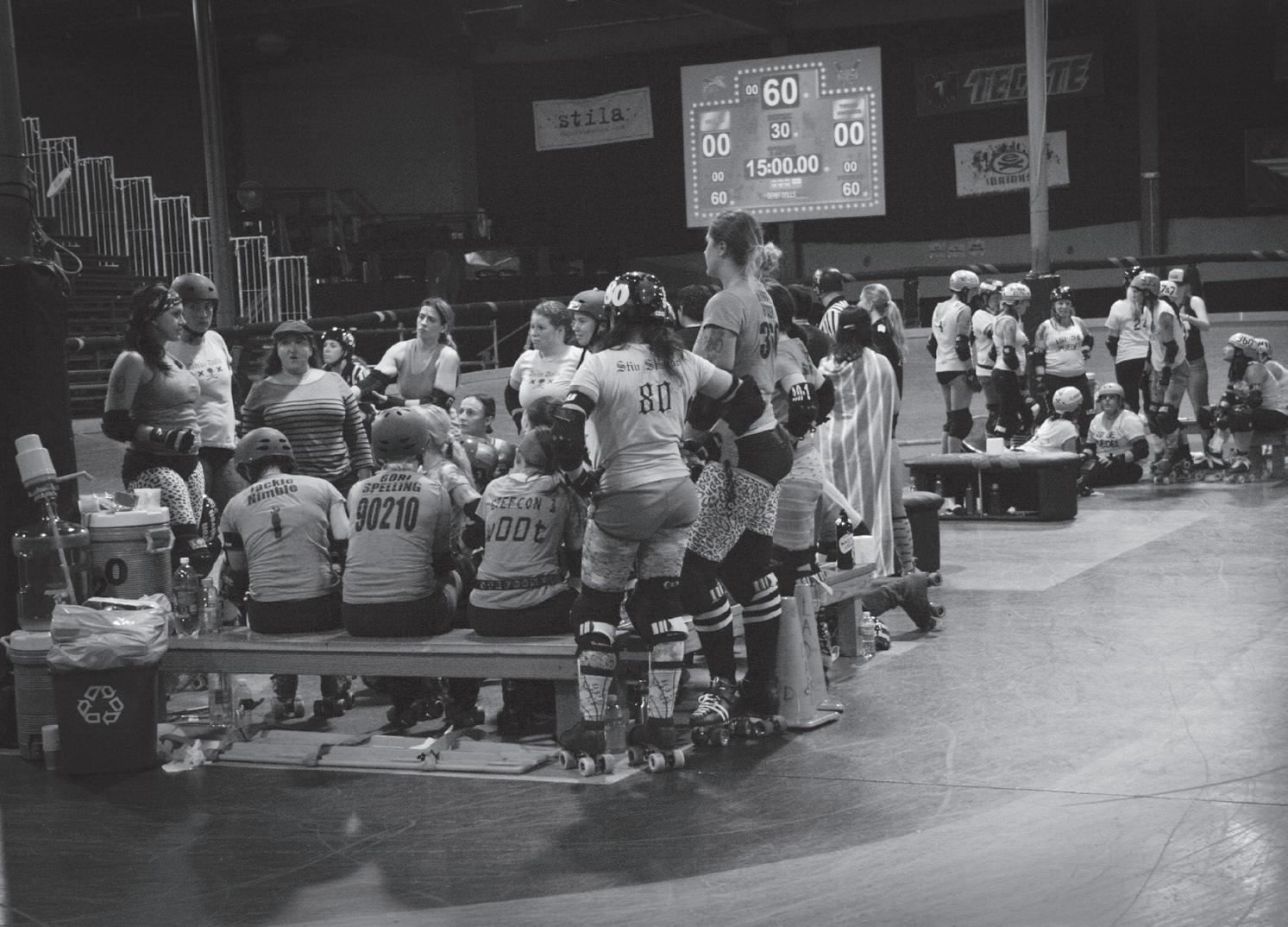
says Ninburg. “There’s sort of this element of this surreal world,you know, fake names, but the sport is very real”, she says. “Outside, it’s sort of a celebration of who we are, sort of like these alter-egos.” “ Like, Rebecca Ninburg, she might be a good sculptor or whatever, but she’s not a bad ass roller derby skater, you know? Demolicious is a bad ass roller derby skater,” says Ninburg, She even credits the nickname rule as giving the skaters the inspiration to give their best out on the rink. “ It just became this thing, sort of a badge you earned here. It was, okay, you get this name and it’s something to live up to,” she says. “ It sort of frees you to become what you want.” Ninburg and her Dolls prove that you can still be a girl and be tough. “ We’re re-defining the word feminine,” she says.
“Feminine doesn’t mean demure, feminine defines being female and it can mean extremely strong, and aggressive, and beautiful, and elegant; we can be all those things.”
“There’s sort of this element of this surreal world, but the sport is very real.”–Ninburg
Rachel “Iron Maiven” Piplica, left and Kristen “Krissy Krash” Adolfi. Photo by Joseph Kukuczka
The Dolls at a scrimmage against The San Diego Swarm, far right. Photo by Amber-Rose Kelly
Story by Lorrie Reyes
Photos by Louie Heredia
Cheers
JEERS beers &
The L.A. Riot Squad and their love-hate relationship with the L.A.Galaxy
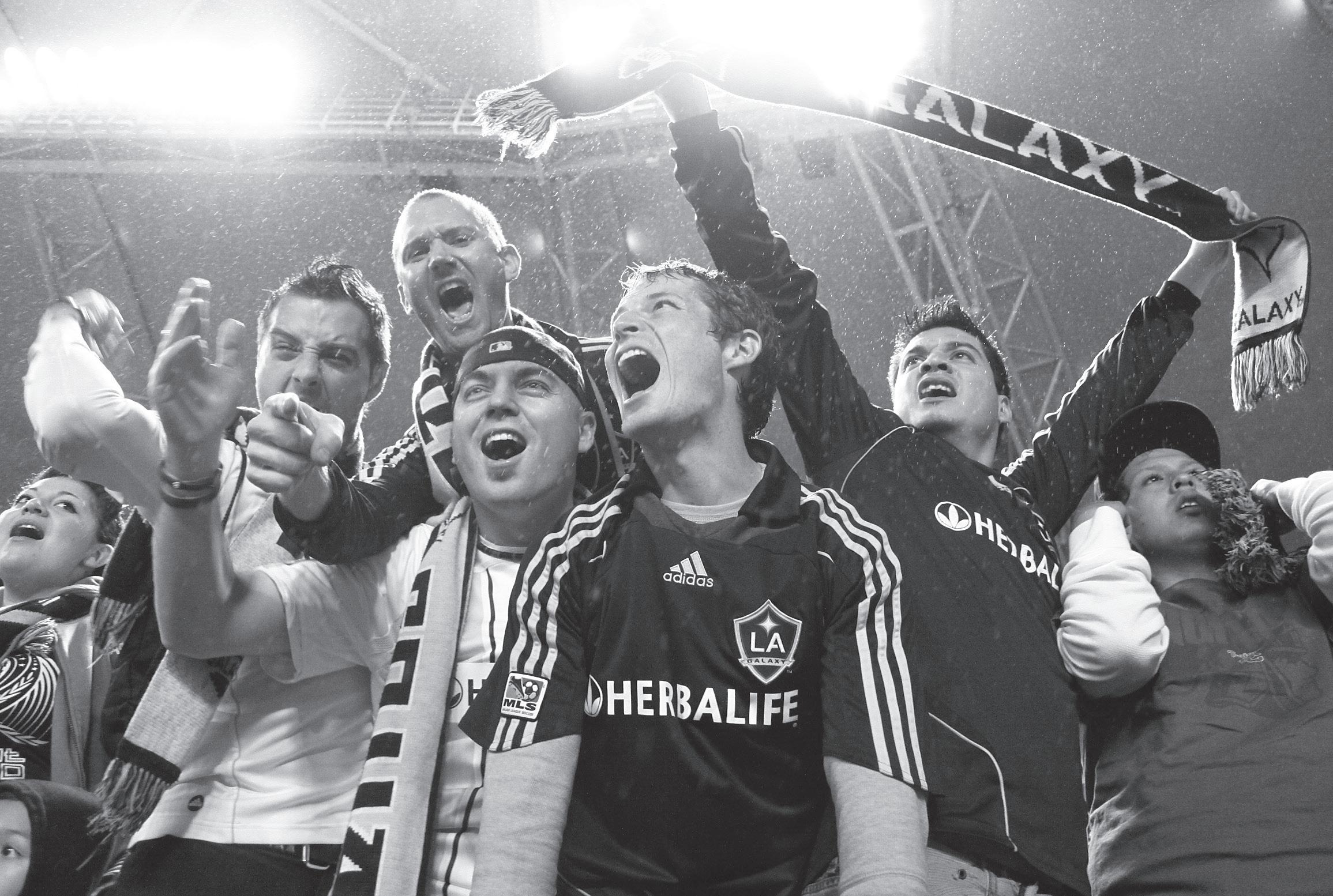
The cheering starts … and it doesn’t stop. “L-A GAL-AXY (Clap, clap...clap, clap, clap)! L-A GAL-AXY (Clap, clap...clap, clap, clap)!
The constant sound of a beating drum echoes throughout The Home Depot Center. No one sits if you have tickets in sections 137 and 138. That’s where the Los Angeles Riot Squad (LARS) stands.
LARS is no ordinary supporter’s group. They don’t wave pom-poms or make clever signs to get on TV. They stand-the entire game. They yell, sing, chant, cheer, and even chastise players-sometimes even ones on the Galaxy.
If a Galaxy player is doing well on the “pitch,” they’re name will be heard in custom flattering chants. And throughout the
7
Loud Noises!— Members of the LA Riot Squad show up to games, rain or shine to support or bash their home town team. Visiting teams and officials also know their fury.
Galaxy matches some of their more pleasant songs include an ode to the Partridge Family’s, “I Think I Love You” and “Nothing But a G Thang” by rappers Dr. Dre and Snoop Dogg usually lead by LARS members. This includes former Pierce College student Andrew Alesana and Edward Rodriguez both have attended games since the Galaxy’s inception in 1996 among others.
But if you are hurting the team’s chances of winning you will know that too. A plethora of boos and taunting will hover the LARS sections if you’re a player or a fan with the opposing teams’ jersey. And if you’re the referee, well you’re the enemy for both sides. The LA Riot Squad is proud of being the “anti-supporter” group. No one is safe from ridicule.
“We’re going to call you out, right now, when it happens,” said the LA Riot Squad co-founder Jeff Skinner. “If we, as fans, are not going to criticize our team who will?”
That was the case in 2009 when the $250 million dollar man, David Beckham, received an endless amount of discontent from the home crowd in his first game back after being on loan with Italian soccer club AC Milan. After a half of taunting Beckham, he approached the LARS corner.
Even now a year later, animosity is still the norm. Curse words and slurs fly Beckham’s way. Some members of LARS still don’t like Beckham, not because of the incident in 2009, not because he hasn’t produced on the field, but because his commitment hasn’t been evident.
“We expect loyalty, heart, hard work. We expect to see that you’re trying. Even if you’re the worst player out there, as long as you’re trying we’ll like you,” LARS member Christopher Tucker said.
The “world famous Riot Squad” has been top story on ESPN, has had their name mentioned on TMZ and Perez Hilton with the Beckham feud. But they are ultimately in their own dedicated section in The Home Depot Center to support the Galaxy and its players. They have their own dedicated blog, Facebook and Twitter page and even a player of the year trophy.
In 2002, LARS made a trophy that is given to the player of the year who best embodies the LARS spirit. Last month, once online voting is completed and was tabulated, LARS chose Galaxy starting forward Edson Buddle as 2010’s player of the year.
“I know that they’re here every game every game cheering us on and encouraging us to win,” Buddle said. “It’s an honor. I didn’t expect to win.”
Approaching their 10-year anniversary this fall, there currently are more than 250 season ticket holders associated with LARS. Although some don’t have season tickets, many LARS members don’t miss a game increasing the number jump to 350 members or more per game.
“It started with 32 names, 10 year ago,” said Skinner.
LARS’ passion for the Galaxy has them driving for away games. Some games as far as New York to see them face one of their many rivals in the New York Red Bulls. Many will make their way up to Seattle for first round playoff action. The Galaxy finished the 2010 regular season with the best overall record and will play the Sounders Nov. 7.
Not only do they share the love of the team and what happens on the field, but they are forming life long friendships and bonds with each other. They are more than just a supporters group.
“As corny as it sounds, the people in LARS are my family,” said Tucker. “Sometimes you can’t stand some members in your family, but I still have each of their backs in a second.”
Since the MLS is still relatively young and only in it’s 14th season, the LARS family is still growing. With future generations beginning to grow up around the Riot Squad and continuing to come back, the future looks to be bright.
“Our group has come from such a diverse cross section.” Skinner said. “It’s the team and the group that’s brought these people together.”
From police officers to college students, LARS has all kinds of members. But they all come together for two common purposes: the Galaxy and the Riot Squad.
The LA Riot Squad welcomes anyone who is passionate about soccer and the Galaxy. Together they will remain standing and chanting in the infamous sections of 138 and 139 at the Home Depot Center cheering on the Galaxy. As LARS member Rodriguez says, “If the team wins, loses or ties, we’re going to be there no matter what.”
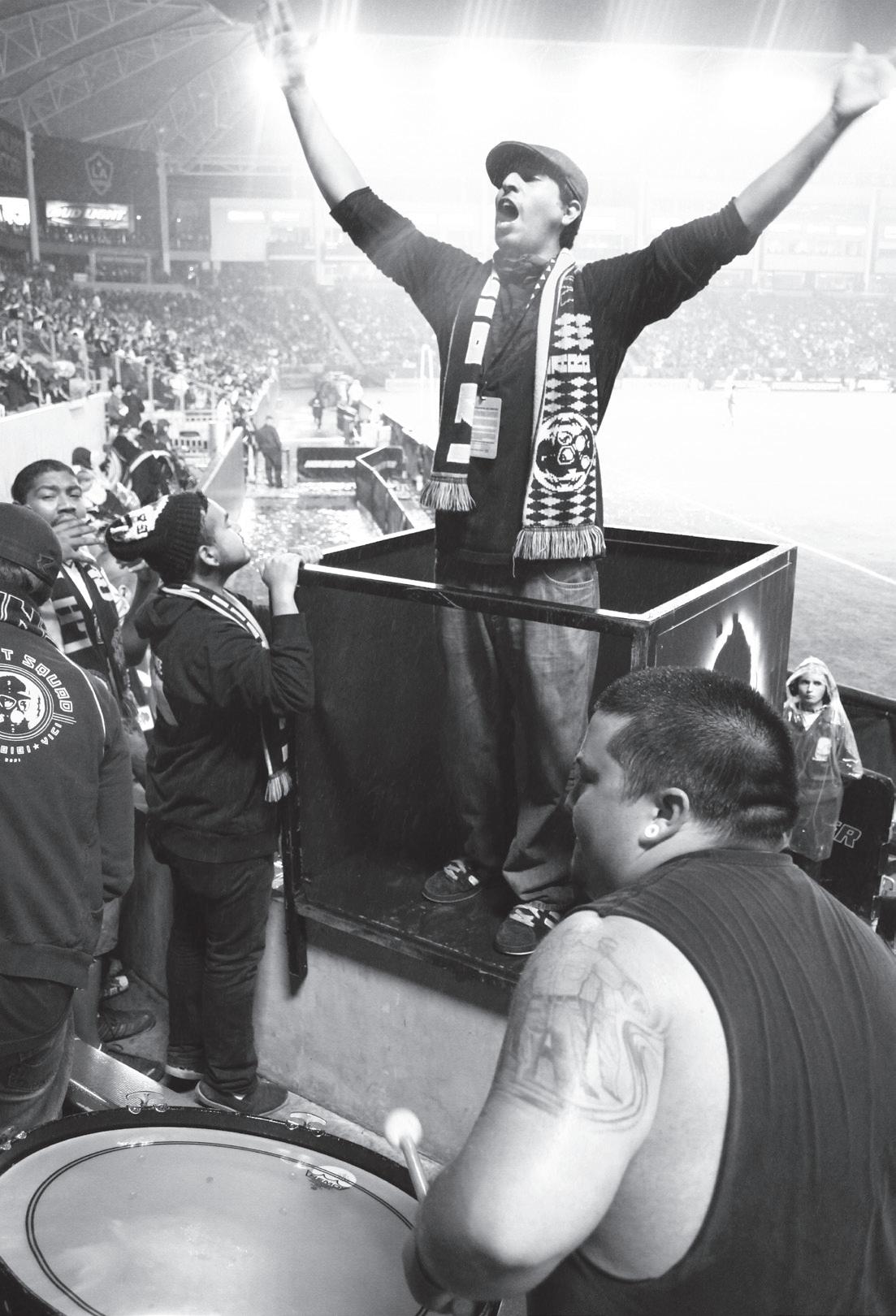 Yell Leader—LARS members switch off box duty to lead cheers.
Yell Leader—LARS members switch off box duty to lead cheers.
HOLLYWOOD Welcome to
Coffee girl by day, diva by night.

One girl’s journey to the script of her life.
Story by Mandi Prince
Photos by UD
9
There she stands a Southern belle in her bedroom assessing her reflection in a framed picture of her idol Andy Warhol with his famous quote at the bottom, “In the future everybody will be world famous for fifteen minutes,” and she’s ready for hers. She starts off looking like an ordinary working class young woman wearing an All American Rejects tee, sweat pants and pink fuzzy booties, let the transformation begin, it’s time to unleash the diva and play the role of a Hollywood superstar in the making, with Mary J. Blige’s “Real Love” blaring in the background. The check list starts: first comes the hair then comes the make-up and now she is ready to get dressed, Lady Gaga heels, check. Audrey Hepburn style, check. Kim Kardashians motivation, check. Grace Kelly’s lifestyle, check.
Introducing self proclaimed diva Sarah Schubert, a 21-year-old Oklahoma native who lives by the motto “Life isn’t about finding yourself, life is about creating yourself,” unknown. She moved to Los Angeles to create herself and it just so happens she landed an internship with Lionsgate entertainment and began to find herself. Her journey started when she was 20. She began reading movie scripts and approving the ones that were up to her standards and tossing the ones that didn’t stand a chance, she loved it.
Sadly Lionsgate had no openings when her internship was through so she had to set her dreams aside and get a coffee shop gig for the time being. This is just a small bump in the road for divalicious Sarah.
Jump on and let’s take a magic carpet ride to the future, can you picture it? Twenty years from now in that high rise building off of Sunset Boulevard, peek inside and see that tall blonde? Ladies and gentlemen the genie has granted her three wishes, and now Ms. Sarah Schubert is a 40-year-old successful author, producer and a household name.
“If there are three things that I would want to do before I die they would be to produce a film, get at least one book published and to just make it,” Sarah said.
always jump in head first but something needs to be done in the mean time.
So, for now she is a barista at a Redondo Beach coffee shop called Neighborhood Grinds but don’t cry she is still inspired by Mr. Warhol’s words “Art is what you can get away with,” and that’s what she is doing, not by being a diva but through latte art.

Latte art is created not by a paint brush but simply by the form in which milk is poured into the drink.
“It’s really fun and interesting what you can do with liquid,” she said with a Cheshire cat grin.
It is fascinating, if you have never heard or seen this before go to Neighborhood Grinds and ask for Sarah, with excitement on her face she will jump up to make one to show you, you will be amazed and stunned to say the least.
She has already started writing two books. One will be about compilations “I think people should write down what they experience or people won’t be able to learn things.” (Lindsay Lohan did you hear that? Tell us what not to do!)
Her second book is about life lessons “it’s about the idea of growing up and not knowing what to do after college.”
Although the genie hasn’t granted her wishes just yet, she is passionate about making it and living the Hollywood lifestyle, “People aren’t going to look at you, unless you’re here [Los Angeles],” she said, meanwhile the bumps in the road are far from being smoothed. Just like other college graduates have learned you can’t
This girl has talent and it has been recognized.
Sarah competed in Millrock Latte Art Competition in Washington last month, where barista’s from all over the United States came to show off their art work. The participants are judged in 5 categories: aesthetic beauty, definition, color infusion, degree of difficulty and creativity and speed. It’s like an episode of Ultimate Cake Off but with lattes. First place winner received 2,500 dollars, second place 1,000 and third 500.
Here comes her Kim Kardashian motivation, on top of all her future goals she wants to open her own coffee shop, she is on the path to building an empire.
It’s going to be a wild ride so buckle up.
“People aren’t going to look at you unless you’re here [Los Angeles].”
-Sarah Schubert
Story by Gina Cantrell
Her heart is racing. She felt dizzy and her hands were tingly. It became harder and harder to swallow and her thoughts were rushing through her mind. Nicole Woodard was convinced the plane was going to crash.
“Oh my God. I’m having a heart attack,” said Nicole. She was experiencing the worst of a long line of panic attacks that became more frequent as the days passed.









The plane landed safely. Nicole was able to calm herself down this time and complete the last leg of a three-week “hokie” dance job that
ZEN Ms.

A panic stricken woman finds courage to positively change her life through the daily transformational practice of Yoga.
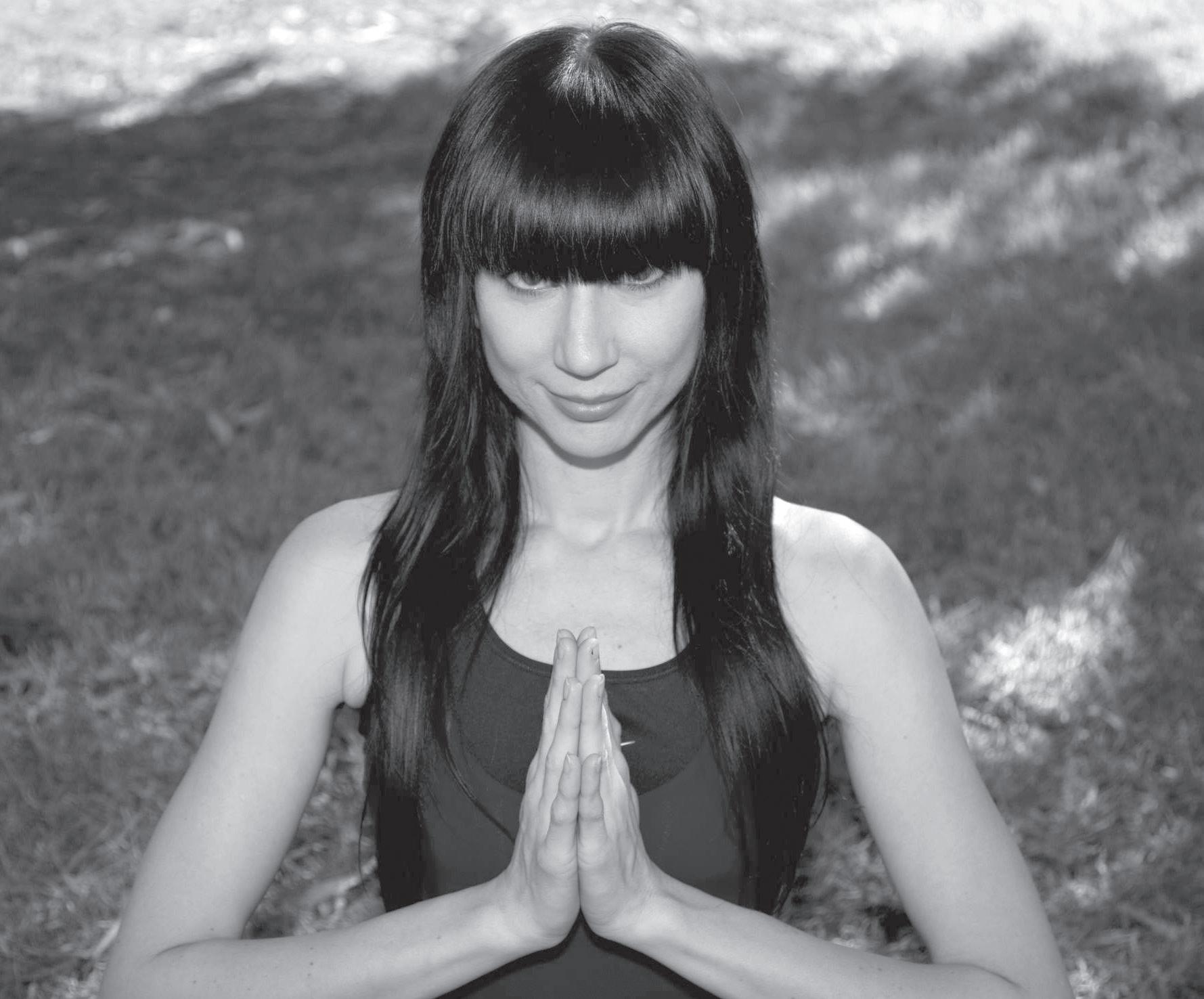
consisted of a tour through various Chinese villages and cities. But claustrophobia and panic returned daily, even after she returned to the United States. “I was always feeling trapped,” says Nicole. Whether she was on a freeway in gridlock or in a long grocery store line, there was always panic.
Finally, one day after yet another panic attack that ended in an all too familiar phone call to her father for help, she realized she




needed therapy.
As a professional dancer, Nicole had already been practicing yoga to help strengthen and condition her body. But it was after she began therapy to deal with her panic disorder that she realized her yoga practice could also help her maintain a healthier lifestyle. In fact, yoga gave Nicole much more than just the tools to overcome her panic attacks. It also gave her the confidence to face her unhappiness, the passion to start a new
11
Photos by UD
career, and the courage to love herself. “[Yoga] really makes you take a look at yourself and asks you why are you doing what you are doing,” says Nicole.
The beginning of her yoga practice was difficult but she knew it
set to begin shooting in North Carolina in just a few weeks. Next, she was able to look at the relationships she had developed in her life. She was involved in a tumultuous relationship with a boyfriend who was unavailable and unhealthy. But now, with a higher esteem for herself, she was able to end the relationship just before she left for North Carolina.
While filming in Wilmington, Nicole would take frequent taxi rides to a local yoga studio she found online. It was here that her deep commitment to the Yogi lifestyle was born. The urge to teach followed soon after.
was helping her learn to take responsibility for her actions. A lot of her discontentment emerged and she realized that she needed to make some changes in her life.
“When you choose people, places and things, you attract certain energy and certain situations and circumstances start hitting you,” says Nicole. The time had come for her to face the choices she had made up to this point in her life, whether they were positive or negative.























The first thing on her list was to cut ties with her dance agency. She had high hopes that a new agent would bring her more success in her career. It worked. She booked a job working on the feature film, “Boulden!” which was

By this time, Nicole had found a home at Rising Lotus Yoga Studio in Sherman Oaks. Claire Hartley and Daniel Stewart, co-owners of the studio, had become her friends. They also ran a teacher certification program that Nicole wanted to be a part of; however, it was $2,700.


Sad and disheartened, Nicole began to wonder how she could find the money to help her with this goal.

But help was only a click away. Nicole googled Career Transitions for Dancers, an organization her friend and fellow dancer Lisa Eaton had mentioned. She discovered that she could apply for a grant to help her cover the training program costs. After an interview, an essay and countless check stub organizing sessions, her package was ready. She sent off the chunky manila envelope to be considered, and
waited.
When Nicole received the check in the mail for $2,000 she cried. It was made out to Rising Lotus Yoga Studio. She was on her way to sharing her passion for Yoga with others as a teacher.
The 200-hour Yoga training program was not easy.
“I got angry and I got frustrated and I got pissed off and I wanted to scream and I wanted to cuss all my teachers out and I ended up just crying,” says Nicole.


Claire Hartley oversees the program.
”There is always some sort of breaking down. Something has to breakdown before it can be built up again,” Claire says. The students endure long intensives on all the postures. They also study the philosophical elements of Yoga.
Claire says that Nicole “would just stop and allow the emotion to come up and just kinda crumble to the floor.”
Nicole’s past resentments from the ups and downs of life as a professional dancer began to bubble to the surface. The constant rejection and competition created a fear based life and she had to face a lot of her patterns, good and bad, she says.

“I wonder where all this anger comes from that I get sometimes. I am never very proud of it,” says Nicole. One of her major concerns is to find ways to diffuse her anger quicker and be more positive in life.
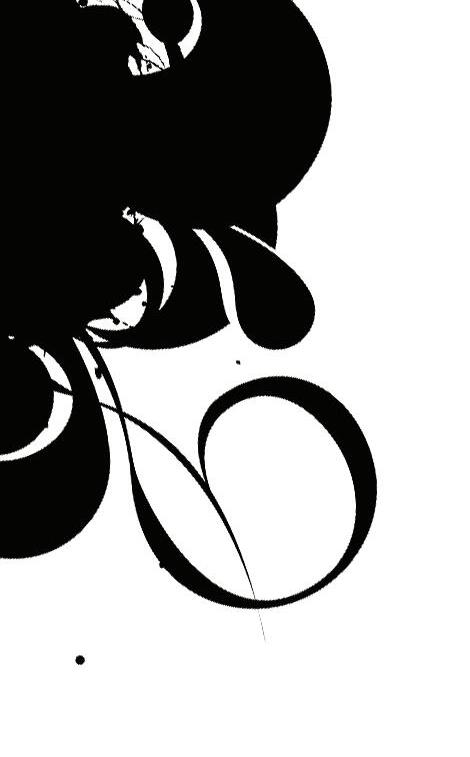
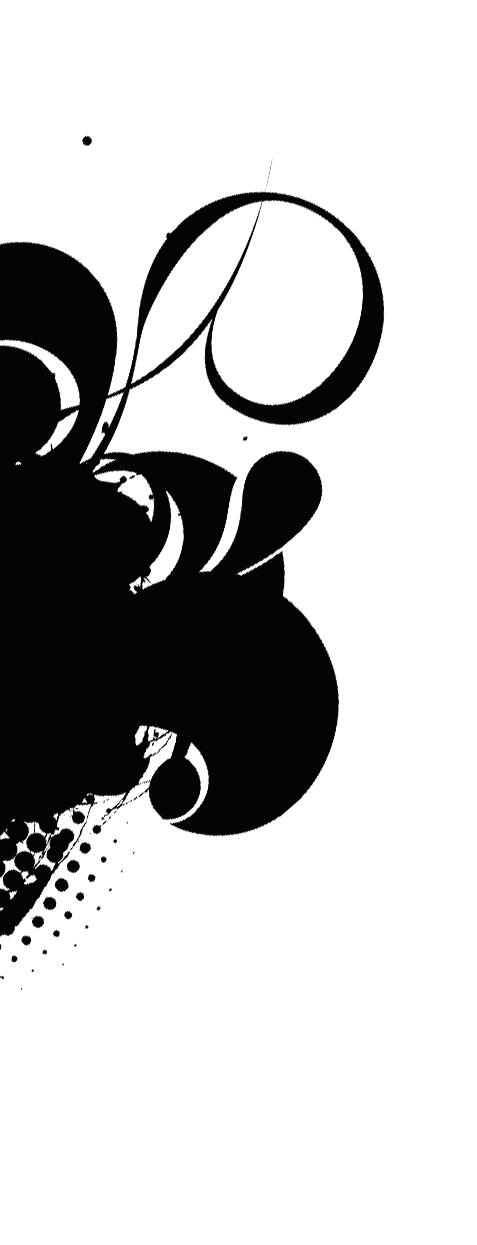

While completing the teacher training, Nicole was still struggling to book dance

“[Yoga] really makes you take a look at yourself and asks you why are you doing what you are doing.”
–Nicole Woodard
jobs, calling her agents and asking for
“There was still, on my end, a lot of searching,” says Nicole. Eventually she noticed that she was gradually shifting her energy toward a more gracious outlook on life. She credits her personal Yoga practice, the Yoga training program, and her mentors Claire and Daniel for this shift.
Nicole was proud of all the work she went through to complete the Rising Lotus Teacher Certification Program. She began searching for a job. Nicole reached out to Inner Power Yoga studio in Calabasas, Equinox gyms, and even Health Net Insurance Group where she was poised to teach a corporate program. All of these promised opportunities disappeared after the initial discussions.
“Oh my God. Yoga teaching is just like dancing. I am a Yoga teacher in Los Angeles. What have I done?” she wondered. Nicole was discouraged and setback.









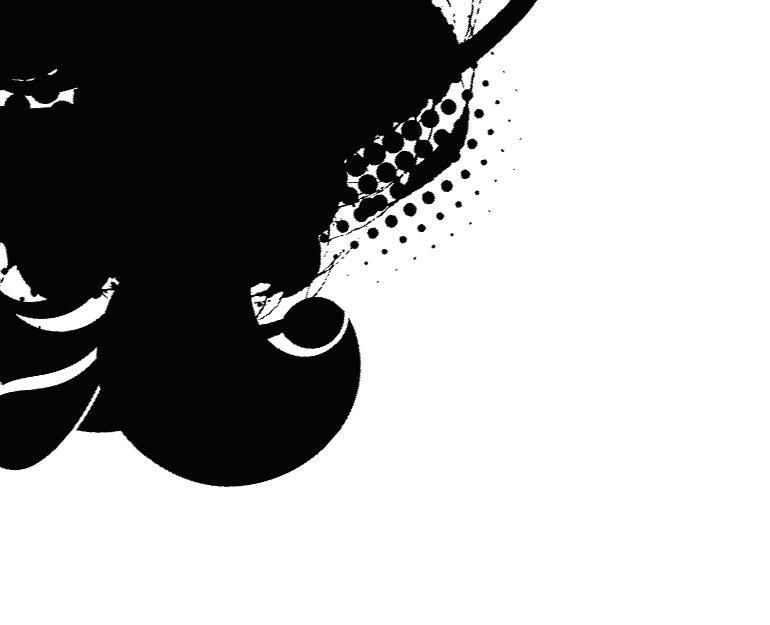

But she was intent on teaching so she began a Yoga class in her own home. She would move furniture, clean her house and teach for a donation. Her home studio held up to eight people but she rarely welcomed more than four, and sometimes nobody would show up at all. So she stopped.
In yoga, Nicole

experienced the benefit of trusting the flow. She now applied this concept to her life during this difficult time. Soon, she was asked to substitute teach a class at Rising Lotus Studio. She could feel things starting to work. She began to substitute for teachers regularly at Rising Lotus and it was during one of these classes that Claire decided Nicole was ready for her own class.
“I realized Nicole had all of a sudden fully blossomed into a teacher, holding the room with maturity and empathy for the process of yoga,” says Claire.
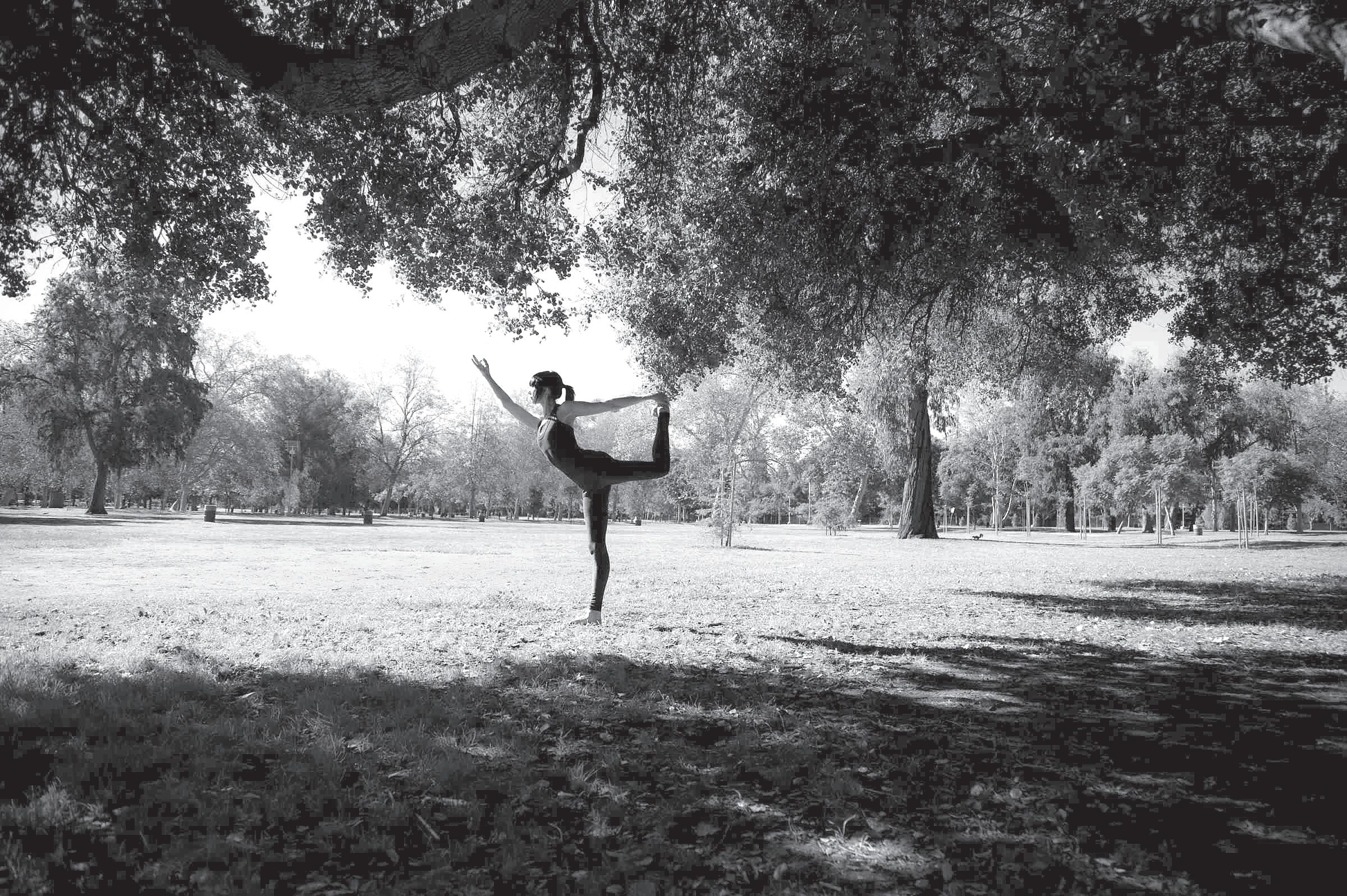
In class, Nicole encourages her students to be easy on themselves and surrender to whatever they need to do to take care of themselves. As a dancer she has learned to notice how music can affect people’s moods and she takes pride in the play lists she creates for her class.

her class,” says Manny Ibapo, a Rising Lotus
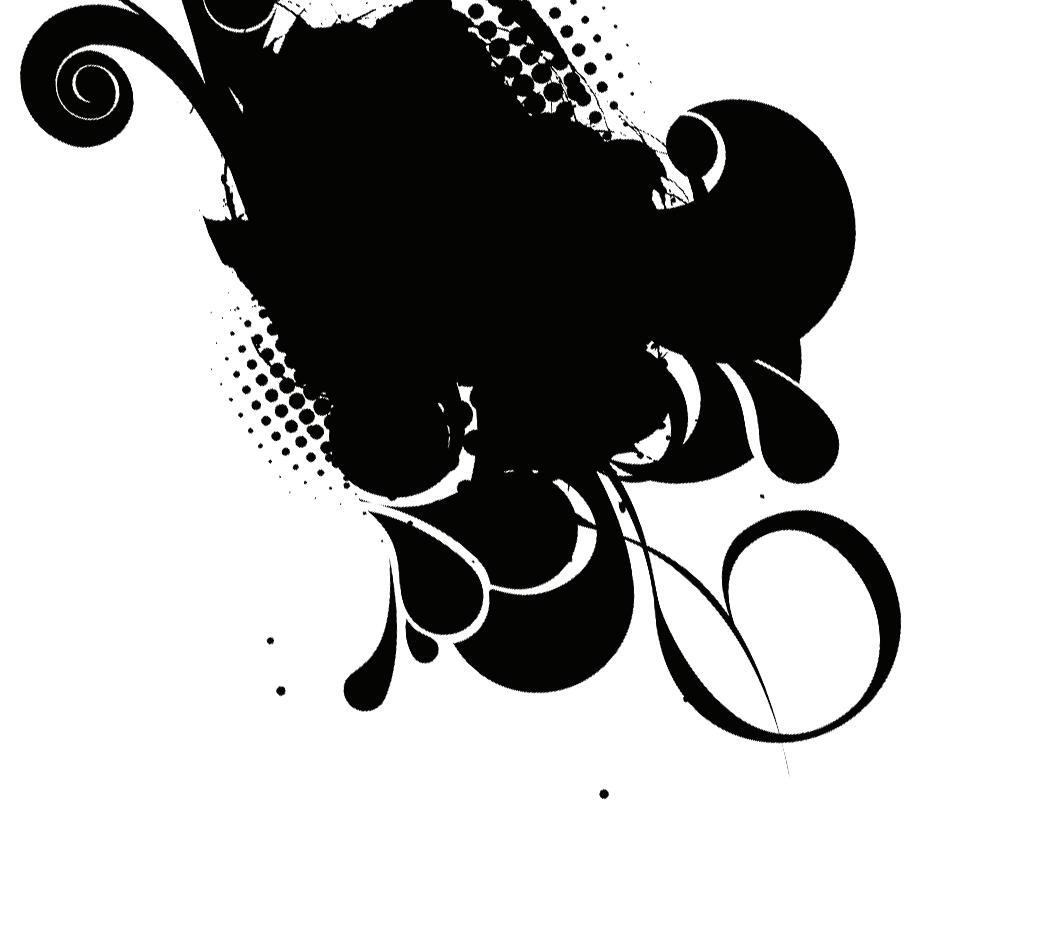

“Its hard not to dance and get down in her class,” says Manny Ibapo, a Rising Lotus Student. The company Nicole chooses to keep has also taken a turn for the better. She has been dating Sacha Riviere for three years and he is supportive and respectful of her choices.
“She’s learned to embrace acceptance of obstacles,” says Sacha. They live together in North Hollywood, California in Claire’s old apartment.
Nicole now teaches three classes at Rising Lotus Yoga Studio where she begins and ends with meditation, a Yogi tradition that encourages self-reflection.
Nicole also meditates at home every morning. Blunt cut black bangs frame her face as she sits atop red and yellow blankets. She faces a table draped in purple fabric that sits eight inches high. Strategically placed pennies, amethyst beads, rosewood beads and a Buddha decorate the space.

Nicole’s outlook today is far different from the panic-stricken woman who boarded the plane home from China years ago.
“I want to be the best person I can be,” says Nicole. “I want to treat others better and treat myself better.”



“Something has to breakdown before it can be built up again”
–Nicole Woodard
From the needle to the paintbrush








Tragedy paved the road to a new life for this ex-addict turned artist
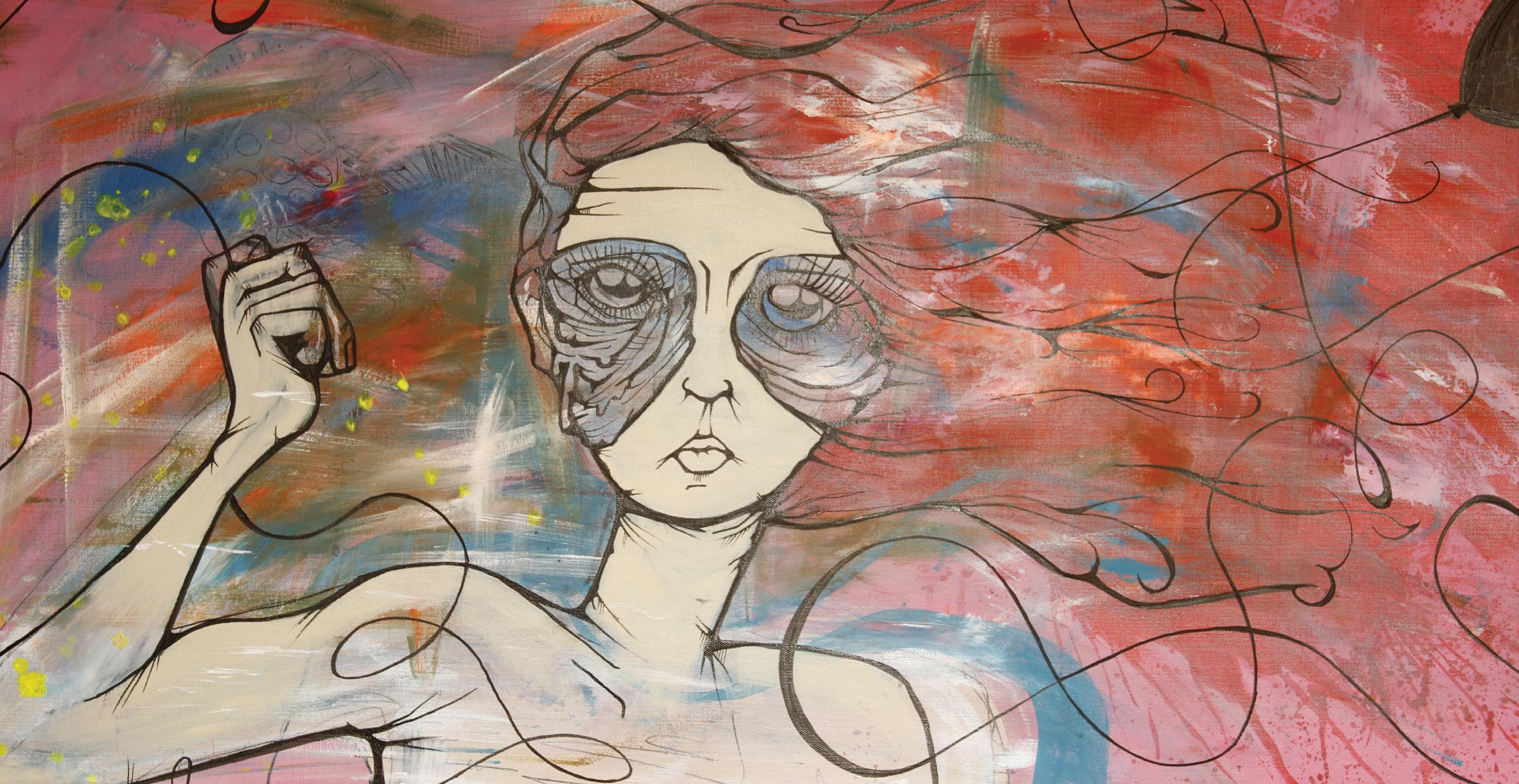


It was a gloomy January afternoon in the beach town of Santa Cruz. Annie Preece waited anxiously in a seedy motel room where her boyfriend would shoot her up with a syringe full of cocaine. She could no longer find any veins in her arm so she depended on her boyfriend to find them for her.



Everything went black.
Annie gasped for air while coming to consciousness in a bathtub with cold water rushing over her and her boyfriend smacking her face. She had overdosed. A couple hours later she loaded another syringe and shot up again. It was all she knew.
“I never thought I was scared of death until I almost died,” Annie says.











Annie went up to her dad’s house in Seattle a couple weeks prior in an effort to get sober one more time. While she was







there, her boyfriend told her about a TV show called “Addicted” on TLC that was looking for people to profile and help them get sober. Annie called and left a message telling them she was a local artist who showed at galleries in the bay area and she had a drug problem.
A producer from the show called Annie back right away and they decided to feature the couple on the show. Cameras followed them around Santa Cruz for the last two weeks that they were getting high. They got kicked out of the motel they had been living in and moved from couch to couch at random peoples’ houses.
Annie overdosed twice that week.

They set up an intervention with Annie’s mom and step dad who she hadn’t spoken with in more than two months. It was shocking for her to see them. She didn’t want them to see her broken and







deprived.











sober.
In the confines of the drug rehab is where Annie discovered her love of painting all over again. Annie was on a steady path to death and many artists don’t become well known until after their demise. After only two years Annie is a bit of an over night success in the contemporary art world and her art has given her a whole new outlook on life as well as a reason to live.
You will find Annie Preece’s work At the intersection of graffiti and pop art. With more than 60 paintings sold in the last two years Annie has been tagged in the L.A. art scene as all up and coming artist to watch according to the BANG Gallery and the L.A. Art Walk.
 The interventionist, Kristina Wandzilak, sent Annie to Axis residential treatment center in Palm Desert to get
The interventionist, Kristina Wandzilak, sent Annie to Axis residential treatment center in Palm Desert to get
Story
Artwork
by Portia Medina Photos by Joshua Cowan
by Annie Preece
14
Party’s Over— Acrylic on canvas by Annie Preece ‘Party’s Over’ came from a realization that “when your an addict, you realize it’s over.”
The 29-year-old admits that she “completely fell in love” when she picked up an actual paintbrush for the first time two years ago. Annie painted nine canvases in her first sitting without any traditional training under her belt. Her dreams were nearly extinguished nine months ago.

Annie’s boyfriend hit a nerve when he was trying to spike a vein the last time she was getting high and inadvertently caused nerve damage in both of her hands. At this point she thought that her career as an artist was completely over.
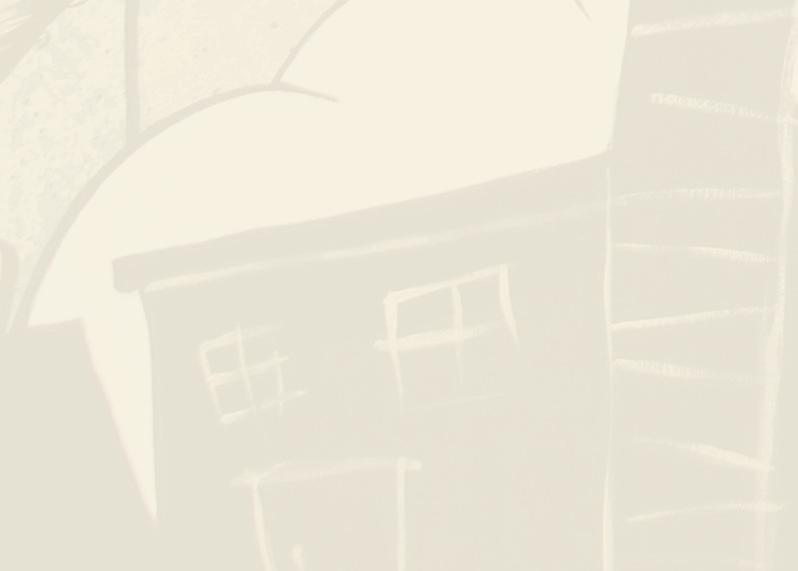
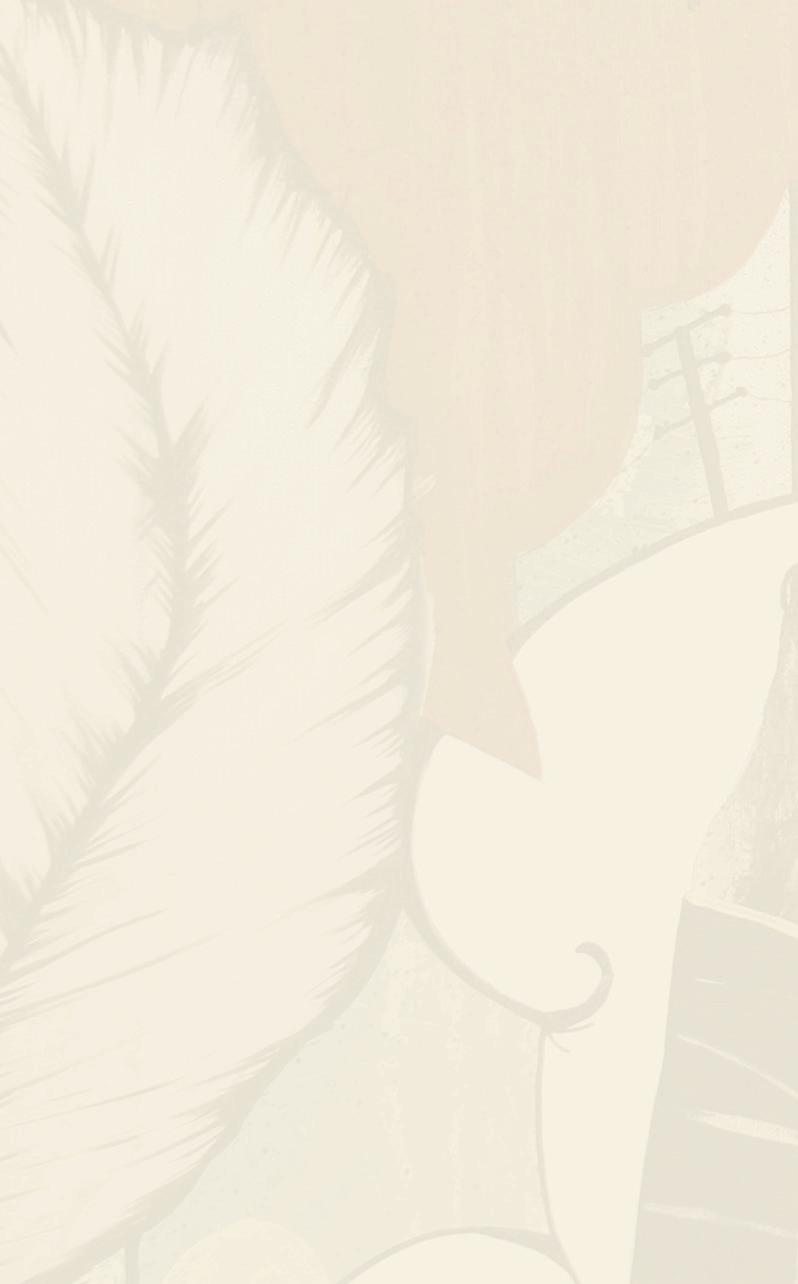

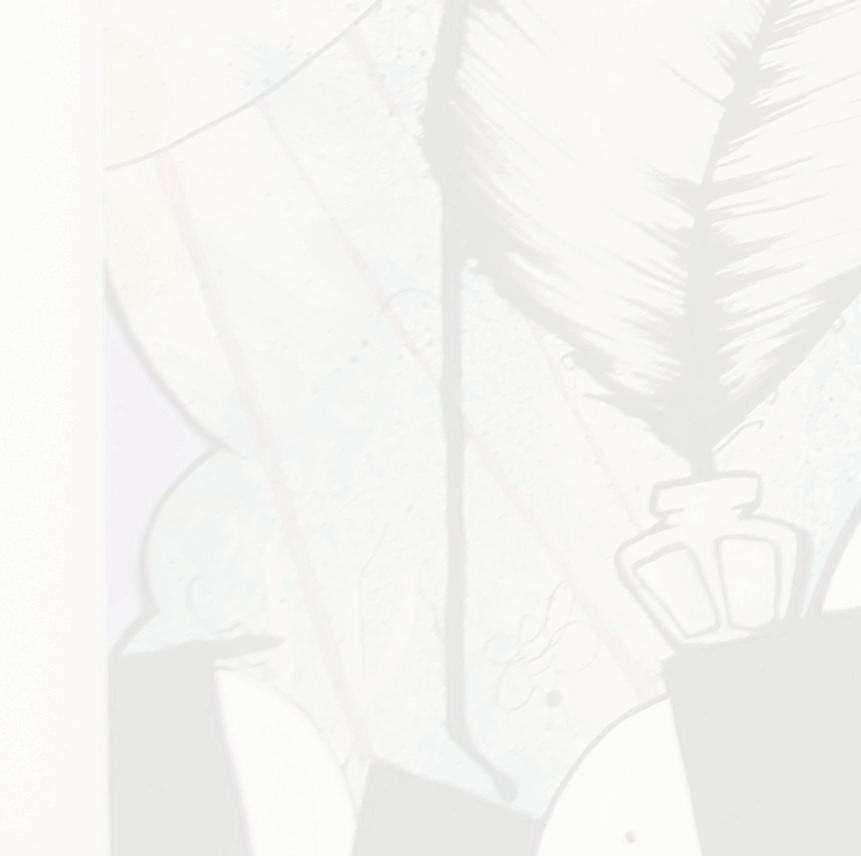
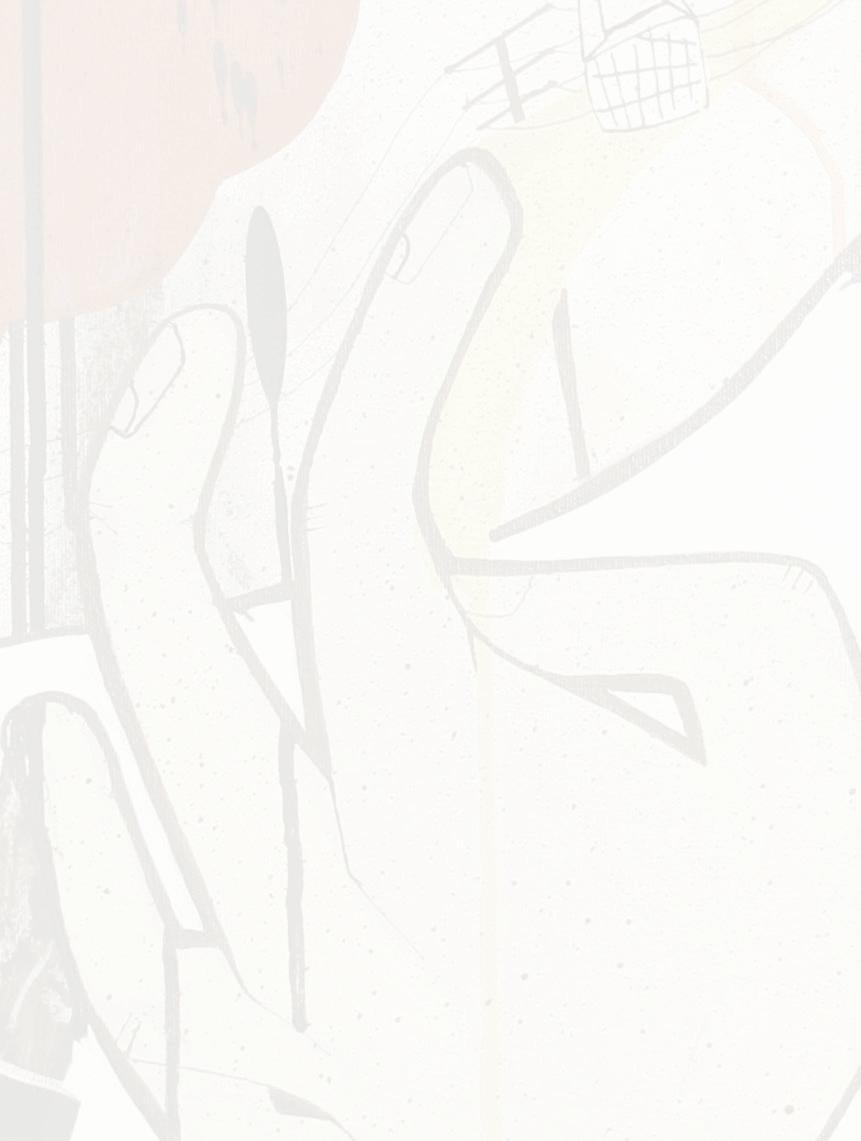




“I couldn’t close my hands or feel my fingers when I went to rehab nine months ago. I had to have help buttoning my shirts and I thought I was never going to paint again,” Annie says.
She was more concerned with trying to figure out how she was going to eat and tie her shoes without her hands properly functioning.
“In rehab I would shake my hands out and just stare at them trying to make my fingers move again,” Annie says, “I would concentrate so hard to try and make my hands work and it hurt so bad.”
After three weeks of being in rehab Annie’s right hand started working again. A couple months later most of the feeling
was back in her hands in what she can only describe as “a miracle.” In the last two weeks at the treatment center Annie began painting again.
“Someone would squeeze the paint out for me and I would position the brush in between a few fingers and paint the best I could,” Annie says. The interventionist had set up a show for Annie at a gallery in Joshua Tree. So she had to whip up a collection of canvases to display.
“I put up 15 paintings at the gallery and sold 11,” says Annie. “And that was the moment, that’s when I became willing to do whatever it takes to stay sober. Something clicked and I realized that none of this would have happened if I didn’t get sober.”

A profound shift had occurred in Annie’s attitude and thinking.

“I was supposed to be dead,” Annie says. “ Now I get to make a living doing something I love.”

Annie lives in a sober living home in Marina del Rey that also serves as her studio where she often paints in the backyard. When you look into Annie Preeces’s molasses colored eyes and sun kissed face framed with thin black glasses you can’t begin to imagine what this artist has been through.
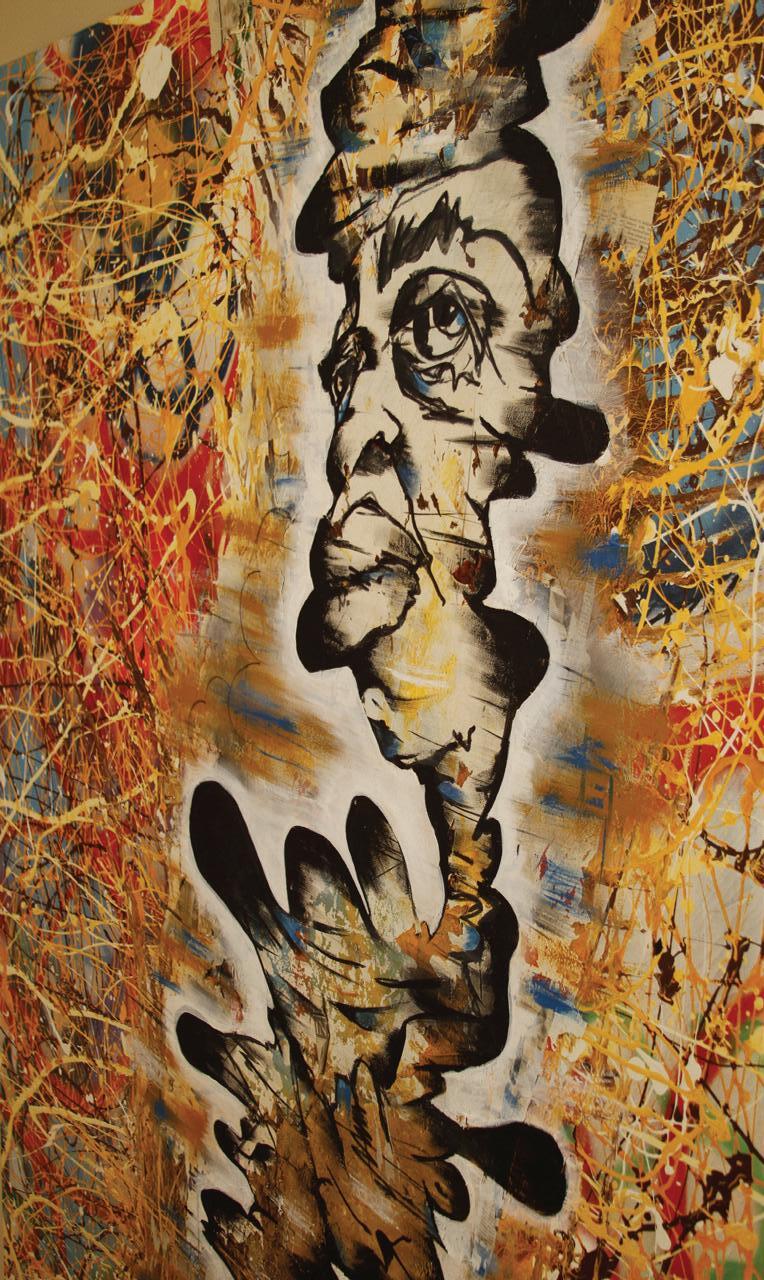
Annie went to rehab the first time when she was 16 years old after failing all her classes and getting kicked out of school. It was a strict adolescent facility in Oakland where there were mostly kids on probation. She didn’t think she was an addict, but went along with this for her parents.
Annie did well for a while after she was released from rehab. She got a job at a little coffee shop on Haight Street in San Francisco and then she started doing graffiti illegally on walls, billboards, and buses.

“I started dating a graffiti artist when I was 16 years old and he showed me how to graff and every other night we would go out and blow up S.F.,” Annie says with a big grin.

The Art Climbs Production Graffiti Crew took her in as one of the few talented female graffiti artists in the neighborhood.
“We would go out and do graffiti and then eat at the falafel place on 16th Street and Mission,” Annie says. “I ran into a girl I was in rehab with and she was using heroin and cocaine (speedball). I was almost 18 and I told her that I wanted to try it and that’s what kick started my speedball career.”
Annie used intravenously the first time
she tried these drugs and jumped in to her addiction head on.
“My parents took my car away from me and I lost my job because I just couldn’t show up to work,” Annie says. “at 19 years old I was infected with hepatitis C.”
Annie’s drug use had progressed rapidly and her family had stopped talking to her all together.
“When I was 19, I called my mom and told her that I was hooked on heroin and cocaine and I asked for help,” Annie says. Her mom sent her to a treatment center in Santa Cruz and she stayed there for two years.
“I would put together 30 days and then relapse and go to jail for things like petty theft,” says Annie. “This would happen a lot and I kind of got used to going to jail.”
Annie had been reduced to animalistic survival skills to stay alive on the street.
One dreary night in the Mission district of San Francisco, the cops pulled up outside of an old beat up van with blacked out windows on the corner of 15th Street and South Vaness. Annie was getting high in the back of the van with a crack head named Peanutbutter. They had stolen the van just a few hours earlier.
Running out of Time–painted on a 2.5 by 4 canvas, Annie began her acryllic based piece as a picture of two legs.
El Sueño– Spanish for The Dream, portrays a knotted up face. Painted four months ago, the final product is an accident after it was hit with a sprinkler.
For more information on Annie and her artwork, visit http://www.anniepreece.com

The cops had their guns drawn and got on the loud speaker telling the girls to get out of the van with their hands up. Annie and Peanut Butter both had prior arrests and misdemeanor charges. When they emerged from the back of the van the cops shoved them down on the ground, slapped the cuffs on them, and hauled them off to jail.
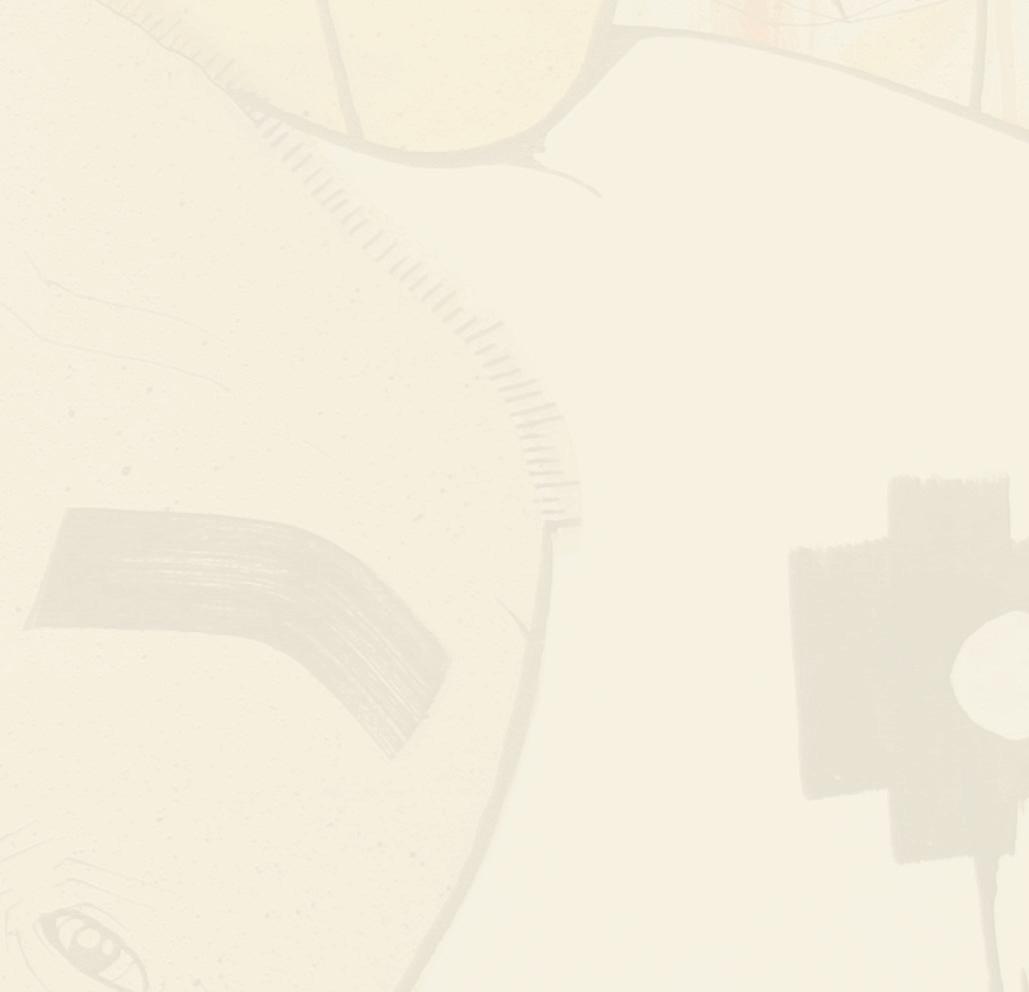
She laughs now, but this is one of the crazier stories from Annie’s checkered past.
When the interventionist Kristina Wandzilak suggested that Annie stay here in Southern California, Annie thought to herself “no f**king way.” She didn’t want to leave her boyfriend or the Bay area.
“The next day I thought that for the last 15 years I always did what I wanted to do and I was only willing to a certain point,” Annie says. “I woke up in the morning and I knew that I would be high again in two weeks if I went back up to San Francisco.”
She became willing to stay in Southern California and do something different for the first time.
Annie moved to the sober living house in Marina del Rey after she got out of rehab. Her first LA show was at Trim Hair Salon on Abbot Kinney Boulevard in Venice during First Fridays.
The Rosslyn Lofts on South Main Street
in downtown L.A. were the next location to feature Annie’s work during the LA Art Walk.

Annie is now the head designer at Writeaway Apparel. The owners of the company are all former graffiti artists who are now in recovery from addiction.
“El Sueño was the piece that really hit me,” says Adam Redhead, co-owner of Los Angeles based start-up Writeaway Apparel.
“I saw pain and happiness, black and white, so many different spectrums came from both sides and she combined them all.”
The LA Art Walk is where Adam first discovered Annie’s larger than life paintings. Annie’s work jumped off the wall and spoke directly to him.
“The brand represents what is possible for anyone,” says Adam. “We are ambassadors for growth and change and Annie represents this perfectly.”
The line of designer T-shirts will be available in stores as soon as November and will feature Annie Preece’s custom designs.
Sal’s Comedy Hole on North La Brea in Hollywood features one local artist a month. This month Annie Preece’s large canvas art adorns the hallways of this comedy club.
“There’s a lot of freedom in her art, almost like it shouldn’t be on canvas at all,” says Sal Froio, owner of Sal’s Comedy Hole. Sal had only read about Annie’s graffiti and street art prior to meeting her.

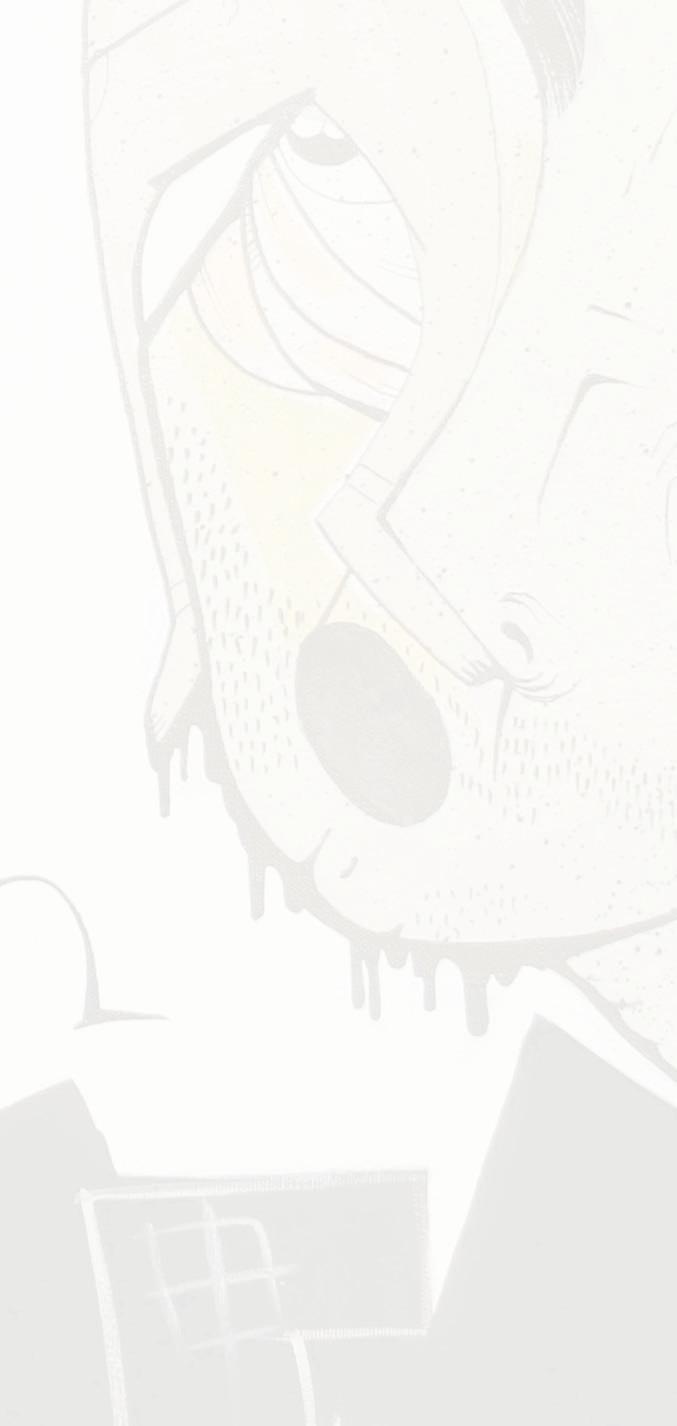

Sal is also a comedian with a background in theater and runs what he calls a “free” or “uncensored” stage where your time on the stage is completely yours. This allows performers creative license to do whatever they want to do.
“Annie’s work is in harmony with the principle of freedom here at the club,” says Sal. “And it was her free spirit that influenced me to work with her.” The patrons of the club have had an overwhelming response to Annie’s work.
“She’s in here every other day selling paintings and she can’t replace them quick enough,” says Sal. “And I almost want to keep her stuff up for another month.”
Annie draws inspiration for her paintings from her surroundings in a very subliminal way. Her personal experiences, environment, and close friends often serve as the springboard for many of her projects in hindsight.


“I was friends with this girl who had a really bad eating disorder and around this time I made the painting Killer Looks where there is a girl holding a blow dryer to her temple (like a gun), her hair is blown out the other side and looks like blood. It basically looked like a girl blowing her brains out with a blow dryer,” says Annie.
“I have tons of gratitude and I still think to myself ‘how did this happen to me?’ Going from living in a cardboard box on the street, needle in my neck, hope to die junkie to gallery artist” Annie says.


“I was supposed to be dead and now I get to make a living doing something I love.”
–Annie Preece
Sophie–Annie Preece lays in front of Sophie, painted 10 months ago when she moved to L.A.
Out of the dark into the blacklight
Tattoo artist speaks on life lessons and demonstrates the hottest new trend in the industry
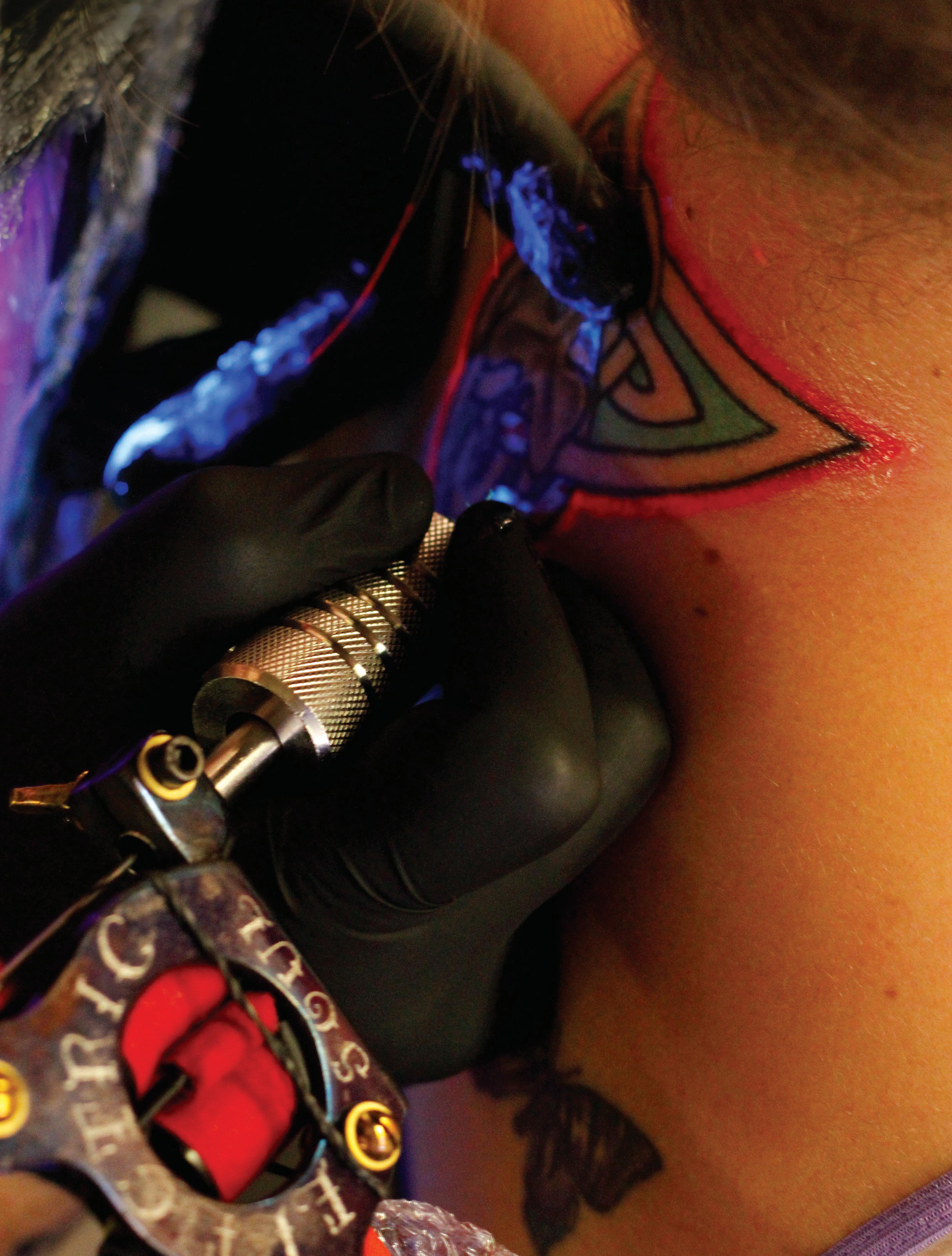 Story by Kori Kim
Story by Kori Kim
He woke up the next morning, guilt-ridden with the thought of what happened the night before.





Back then, he stood at 6 feet 2 inches with a build of a baseball catcher. John Corell, owner of Why Not Ink Tattoo, in Chatsworth, Calif., towered above his friend. “And I’m a big guy,” he says, “so I hurt the guy pretty bad.”
He couldn’t believe he had the capability to physically attack someone, let alone his friend—all of this over some silly horseplay gone over-the-edge. He just kept punching his friend over and over again.
“The morning after-- that’s when I knew that I was done with all of this [drug use],” John says. “I was so fucked up on pot and alcohol, and I just lost it.”
 Photos by Joshua Cowan
Photos by Joshua Cowan
He remembered seeing his friend the next day. His chest was covered in softball-sized bruises the size of John’s fists. He had hit him about 30 times. “I can’t believe I physically hurt a friend,” the soft-spoken Granada Hills native says.
Thirteen years later, John at age 30, is scurrying around his tattoo shop asking himself, “Where did I put that drawing?” as he anxiously looks for a picture of a tiger he completed for a later session.
Art has had a heavy influence for John since he was 8 years old. As a child, he would study images from coloring books such as Roger Rabbit, and replicate the images on paper. At age 10, and with the influence of his uncle, John’s creative outlet was expressed through graffiti art.
John and his uncle, who was ten years his elder, had a very close relationship. His uncle committed suicide that year. “I took his death pretty hard,” John says, as he searches through his workstation for the picture. “I just stopped drawing and I got heavy into drugs a couple years after that.”
He recalls an incident in Laughlin, Nevada when he was in his teen years. He and his crew rented a room at the Pioneer hotel and made way there with two “teeners” of Methamphetamines. “And two teeners of Meth is a lot of meth,” says John.
While he and his friends were partying in the hotel room, John didn’t realize that the police was called to the hotel. Moments later, the SWAT team showed up to the Pioneer. “I thought to myself ‘oh shit!’ when I looked out the window and saw what I saw,” he says, “We quickly rounded up all our shit and got the hell out of dodge.”
He then explained that the SWAT team was called to the hotel for another drug-related incident in another room at the Pioneer.
“Even with a scare that big, I never had any awareness of the consequences of my actions,”
says John. “I’ve been arrested twice for possession before; I’ve had guns pulled on my head a couple times. And I still didn’t learn my lesson until the night I attacked my friend.”
He continued to explain a time when he and his friends, under the influence, were speeding down Woodley Ave in a friend’s car. The car lost control and crashed. Though everyone in the car survived, he was surprised that they came out of it alive.
Finally, 15 minutes after a long and frantic search, John realizes the tiger drawing was stuck behind the drawers of his Craftsman toolbox the entire time. That’s where he keeps all of his tattooing equipment.
“I’ve been clean ever since [the fight],” he says, as he finally begins preparations for a client who is receiving an ultraviolet
blacklight ink tattoo.
With the help and support from his investors, John opened the doors to Why Not Ink in May of 2010 with a focus to make it a drug-free environment, typically a hard to find in a tattoo shop.
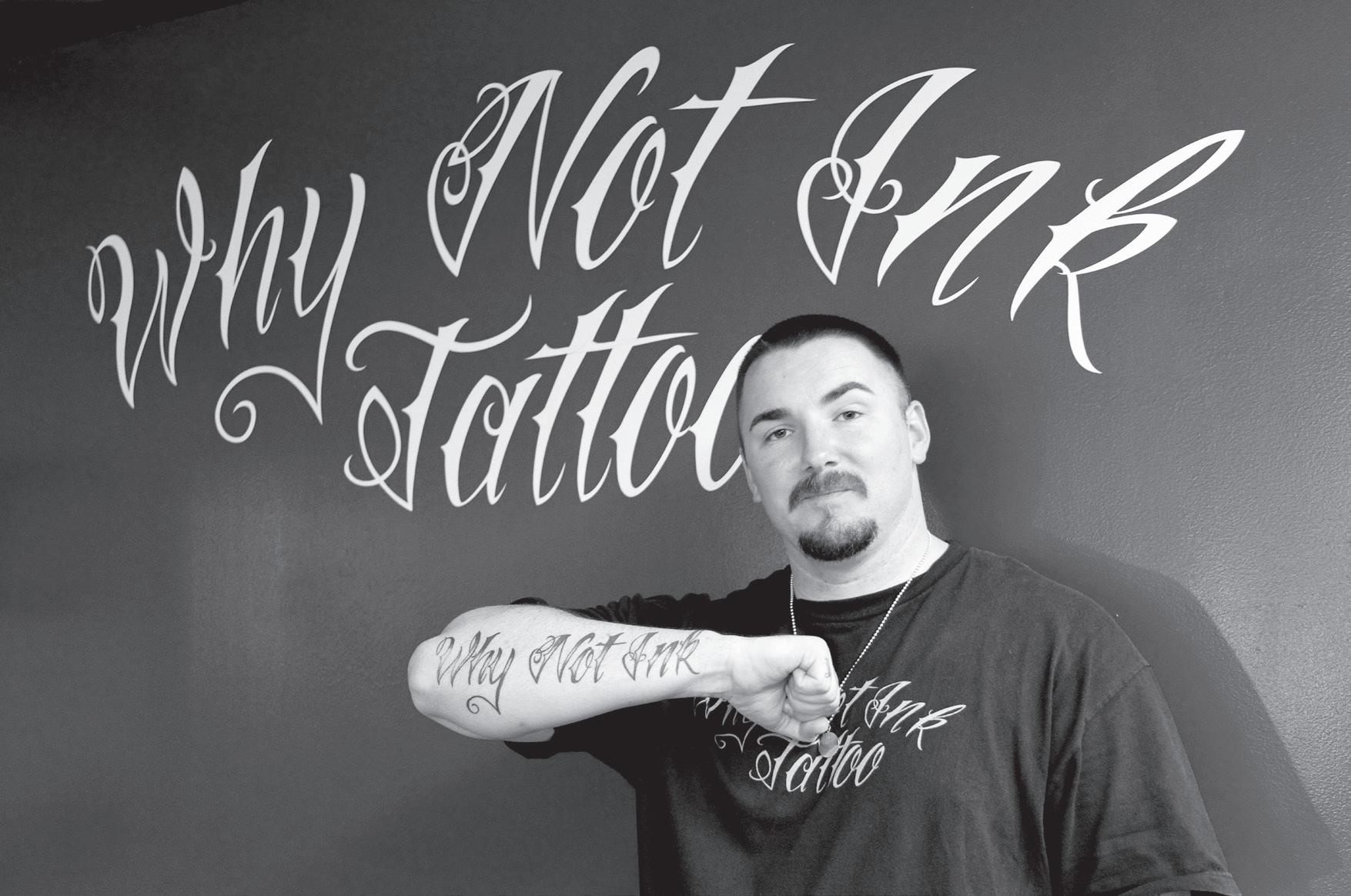
“I firmly believe in making the tattooing experience enjoyable for everyone,” he says. “If the clients are comfortable here, that means we’re doing something right.”
Soon after he attacked his friend, he put himself through drug rehabilitation. He started volunteering at substance abuse treatment programs as a counselor.
“I knew this [counseling] was my calling after an experience I had with a girl who was in treatment. No one could get through to her but me,” he says, as he pulls out two bottles of Chameleon UV Blacklight ink, one in white and the other in
neon orange. “She told me that if it weren’t for me, she would have ended up dead or on the street.”
After talking to a fellow employee at the treatment center, he found out that people actually got paid for doing what he was doing. At age 20, he went to school, received a certificate in Addiction Studies at Mission College in Calif. He later became the director of treatment programs at Action Rehab Center in Simi Valley, Calif. at the age of 25.
Soon after, he moved to the Wonderland Center, Hollywood Hills, where he worked as a clinician at the rehab facility. In November of last year, Wonderland closed their doors, and with the advice and support of his investors through the tough economy, John pursued his goal and opened his own fullservice tattoo shop.
Since his sobriety in 1997, art made its way back into John’s life by the way of a new medium, a tattoo machine. “I was lucky to have the amount of support that I did from my family and friends,” he says. “With all their help, I was able to finally get tattooing equipment. The first year I was tattooing, I offered everyone free tattoos in order to
Inked– John Corell, owner of Why Not Ink Tattoo.
“I never had any awareness of the consequences of my actions ... until the night I attacked my friend.”
–John Corell
help build my portfolio.”
He reassured his clients by offering to pay for any mistakes made on any tattoo he created. “That put more pressure on me to do the best quality work that I can,” he says. “I never had to pay to get someone’s tattoo fixed.”
As John is checking the needle adjustments to his tattoo machine, Kari Herwig, 24, from La Crescenta walks through the doors of the shop. She beams with light on a cloudy Friday afternoon, with her curly short blonde hair and a smile as big as Cameron Diaz.
Kari is receiving a touch-up session of blacklight tattoo on a piece that covers the lower nape of her neck: it is a Celticstyle inverted triangle, about three inches in length, done by a different artist. In the center is an outline of a shamrock.
“Yeah, it’s almost gone,” she says. She lifts her hair so that they could all observe.
John turned on his blacklight bulb and waved it across her tattoo. “See, you can see little
spots here, and over here,” he says, as he points to the outer circular beam that was once an aura of bright neon orange. The knots in the triangle had speckles of white, dusting it like powdered sugar.
She sits backwards on a chair, and lowers her head. John dips his needle in the orange ink with one hand, stretches her skin taut with the other and balances an 18-inch blacklight bulb on his knee. He does all this with no effort.
The tattoo machine starts to buzz and he’s grazing Kari’s skin with the needle. As the needle traces the outer circle, it leaves behind a trail of bright orange, like a neon tube embedded into the skin. It glows vividly and soon starts to dim, only because little beads of blood emerge at the surface of the skin.

“I’ve had a lot of practice doing blacklight ink work,” John says, as he adds a conversation to his mix of current duties. “I practiced a lot on myself when I first got into it [tattooing]. I have
[blacklight] ink on my shins, on the teeth and the scales of my dragon.”
He raises the left side of his shorts, mid-thigh. Just above his dragon tattoo, is a portrait of Mother Teresa—one of John’s personal heroes, that he tattooed on himself.
A screaming dragon covers the entire span of his lower leg. At first glance, all you see are scales, claws and teeth. Waved under a blacklight, you can see the highlighted accents of the dragon’s eyeballs, fangs, and other under-shading.
“If a person [with a blacklight tattoo] notices that their tattoo is fading, it’s a good chance only one pass has been gone over the skin with a needle,” John says. “Also, blacklight ink has a watery consistency, so you have to make at least two passes over the same spot for the tattoo to stay permanent.”
He demonstrates by showing the inside of his index finger. It reads Love and Happiness, in cursive letters.
It glows vividly and the color was distributed evenly through the entire piece. “I’ve had this one for three years now,” he says.
John also shows another one he had done on his wrist, a symbol of circle with a triangle inside; it also looks sharp and bright under the light. “One of my friends saw this one, and he asked me to do the exact same one on him, the exact same way,” he says.
An hour passes, and Kari’s tattoo is complete. The overall tattoo is tinted pink from slight irritation. He wipes off the residual ink left on her skin and waves the bulb around one more time. Tiny spots of blood darken the glow underneath. “It’s going to be fuzzy-looking through the healing process, but in a couple weeks or so, it should look pretty fresh,” John says.
He tears off a section of saran wrap and secures it with medical tape over Kari’s new blacklight tattoo. Still smiling, Kari wanders off, socializing with the other tattoo artists.
He finally takes off his gloves and stands up to stretch his legs, getting himself ready for his next appointment waiting in the front of the shop.
His shop manager and close friend, Chuck Whipple, who also worked as a drug/alcohol counselor years ago, sits at the front of the shop tracing an image for his next client. Pretty and petite tattoo artist Raychel Daza is smiling big, strutting around the shop, and bobbing her head to some old-school rap. And everyone has a big smile on their face.
“I love my staff,” John says with a smile. “They are family to me and I trust and respect them very much.”
With a build of a defensive lineman, John Corell, 6 feet 2 inches, continues to stand very tall these days, and not just in height.
15424 Chatsworth Street Mission Hills, CA, 91345 Phone: 818-894-5236 Mon - Thurs: 2:00 p.m. - 10:00 p.m. Fri - Sat: 2:00 p.m. - 12:00 a.m. Sun: 2:00 p.m. - 10:00 p.m.
Finished–John Correl uses an ultra violet light to help him tattoo 24-year-old Kari Herwig at Why Not Ink Tattoo in Mission Hills.
Why Not Ink Tattoo
How to find a soulmate
Step
By Gina Cantrell
Certified love attraction coach, Meg Register, is a spiritual practitioner and counselor. She adopted The 7 Steps to Soulmate Love from her teacher and mentor, Kathryn Alice, another licensed spiritual practitioner and author of Love Will Find You. Meg lives and treats clients in the Los Angeles area.
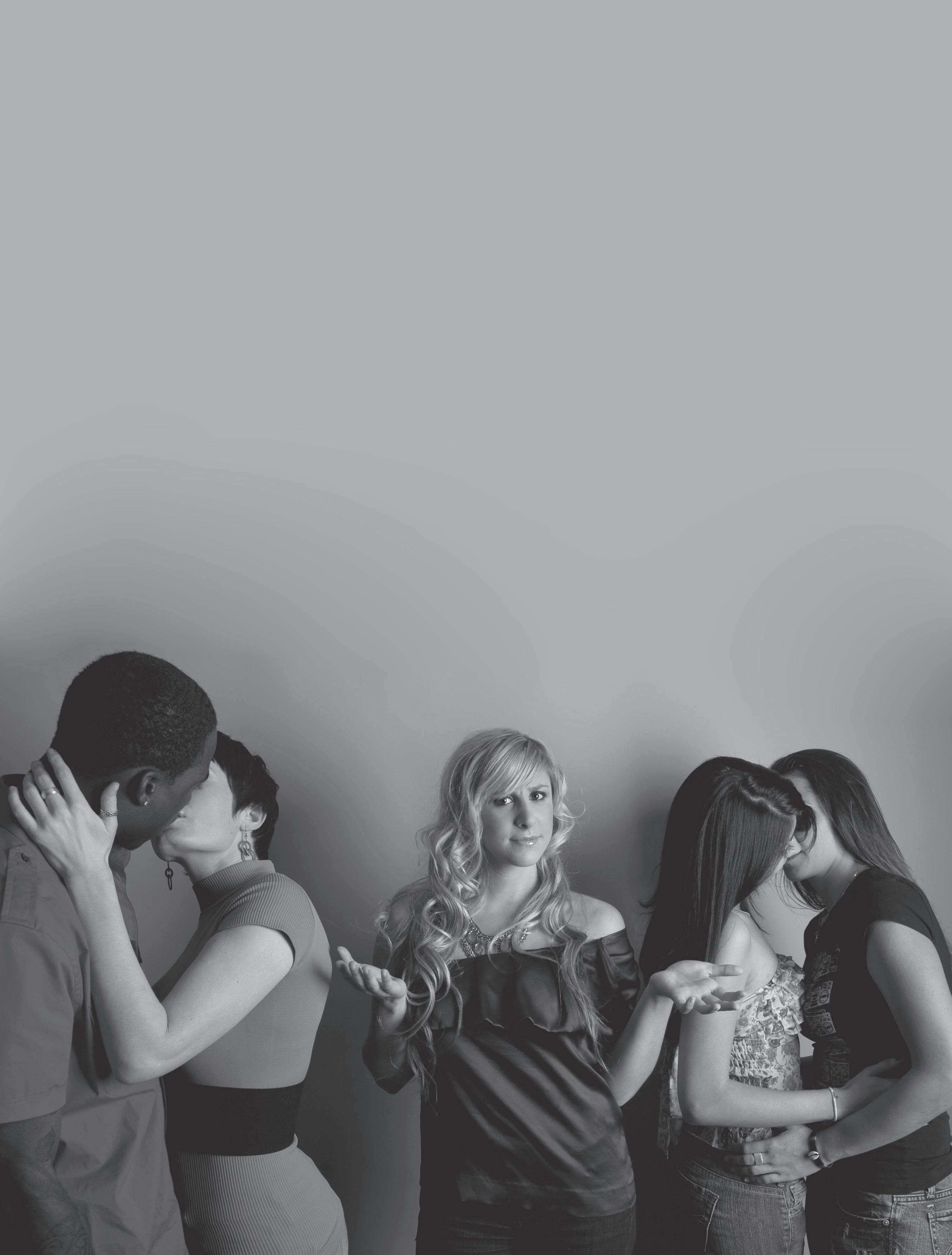
1
Remove everything in the way of love: Beliefs, people, vibrations and superstitions. This is where you cleanse all your attachments to exboyfriends or girlfriends, and rid your consciousness of negative beliefs about love. Meg urges people to get a journal and write down all their negative beliefs about relationships and love and burn them. Replace those thoughts with positive affirmations about love.
Step 2
Step 4
Give up trying to figure out, “how.” Meg emphasizes the fact that faith is a huge part of her teachings. Once a client has gotten rid of all their limiting beliefs, they need to stop worrying about how it all works out. Trust in the Law of Attraction is imperative, and here is where you must start practicing that trust.
Give thought to who your “One” is. “You have to have good boundaries; know what you want, and build a template for your soulmate,” says Meg. This can be writing love letters to them or listing qualities you want to manifest.
Send out a soul call.
Line up with who you really are. “This is all an inside job,” says Meg. This is where you evaluate if you are being true to yourself. For example, if you are on a dating site you should present yourself in the most honest way possible. If you are lying about who you are, you are telling the universe that you are not good enough and that will attract the wrong partner, says Meg. Take care of yourself, treat yourself with respect, and you will attract that in a mate.
Once you have defined the qualities you want in a mate, you can start preparing for their arrival. This can be as simple as buying an extra tooth brush for your soulmate to use when they arrive or you can even practice making dinner for the both of you. Act as if they have already arrived.
Step 5
Step 3 Step 7
Step 6
Do only that which feels good.
“Insecure and lonely attracts the same,” says Meg. So stay pumped up and keep yourself happy so that you attract more of the same.
Exercise patience and be happy. Another lesson in trust: no one can tell you how to do it; you just have to decide to have faith.
Photo Illustration by Amber-Rose Kelly
POP! Goes her heart for

Afan girl suddenly screams and within seconds, a stampede of girls runs towards the intersection to see a van with tinted windows. Fans stand with their video and still cameras on the ready, waiting for their favorite boys to come out and snap a shot. They follow their idols to a restaurant by the Nokia Center where they watch favorite boys eat. They stand outside until 2 a.m. just to see their idols wave and throw
hearts and kisses their way. Standing in the cold for two hours, these diehard fans hold signs. Some of their signs are hand-made, but some went to extremes with blinking neon lights. Losing their voices does not matter any more. They scream and shout their idols names as loud as they can. Some fans came prepared. They had stools, and were wearing matching shirts and hats with prints of their favorite bands. Some were waving glow
Storyby Vineree Dorin
Photos by Louie Heredia
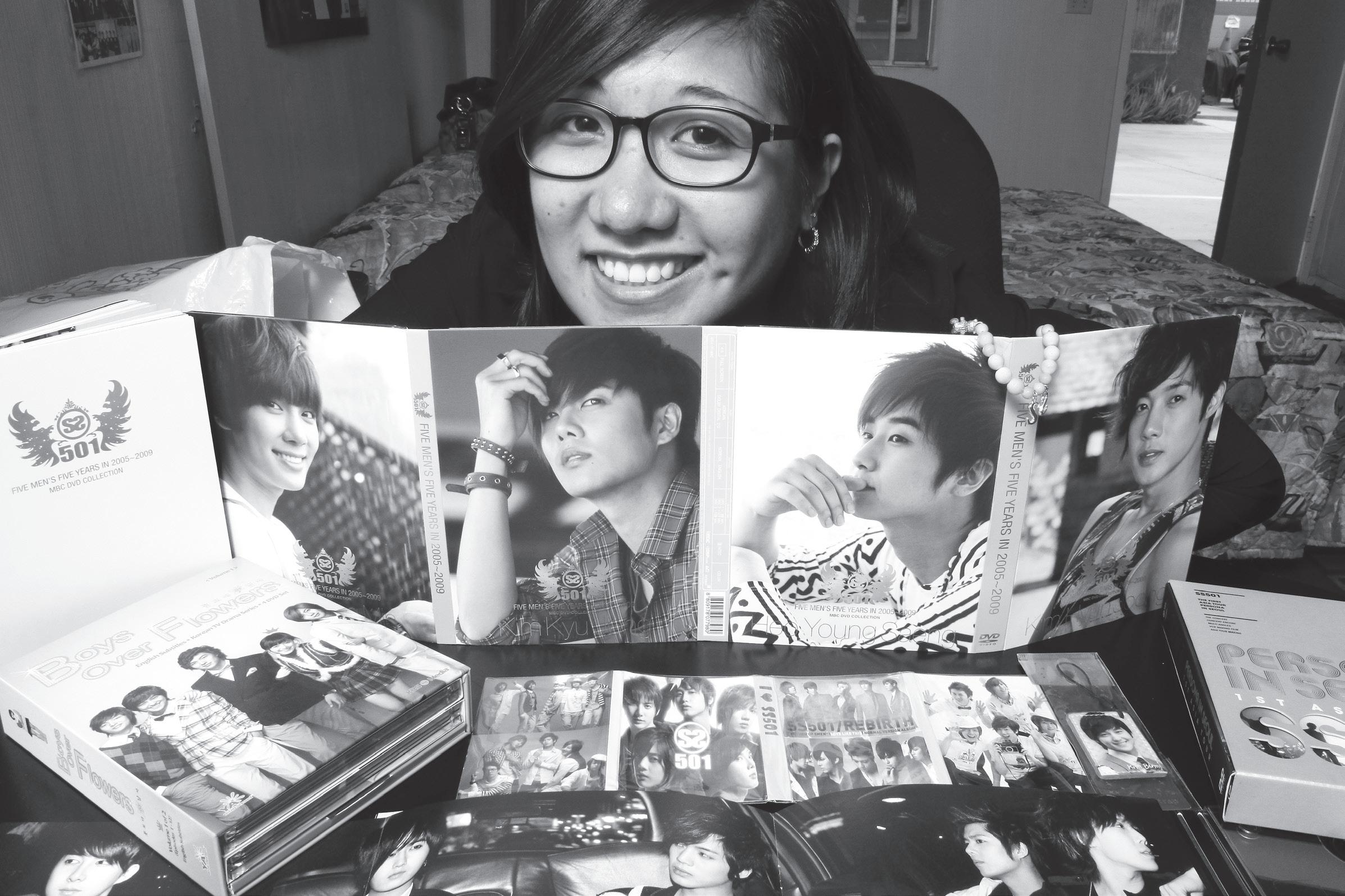
sticks with the logos of the boy bands.



These were some of the sights at the Korean Pop Culture event at Staples Center. The parking lots were full. The traffic was unbearable. But it was all nothing for Kpop fans.
Korean Pop (Kpop) has different meanings to different people. Technically, it is a genre of music similar to American Pop and R&B with a Korean modern culture twist. The majority of Kpop music is boy bands,

















For infatuated fans, following Kpop idols has become a lifestyle choice.
Baraan admiring her favorite Kpop band. Obsessed–
21
but there are also some girl bands and solo artists. Kpop artists might sing and dance, but the good looking bands are what hook the fans.
Kpop fans have created an energetic world through their love for their bands. This has made Korean Pop music rise in popularity all over Asia. It is a mad world in which you enter at your own risk. Being a Kpop fan becomes a lifestyle to some fans. The passion that each fan has for the bands takes their love to a whole new level.
Valerie Baraan, 24, a Ralphs supermarket employee and also a Kpop fanatic has two blogs for her Kpop passion. She collects pictures of her favorite boys and purchases any merchandise whenever she gets the chance.

“For me, I like Kpop because American music nowadays is all about sex and drugs and their videos and lyrics are all explicit and what not. I mean, not all, but majority,” Baraan says.
“Kpop is just catchy and their lyrics have real meanings.”
Baraan enjoys that she can almost get to know her favorite artists through her television.
“You can never really know them, but through all the variety shows they appear on, you get a glimpse of
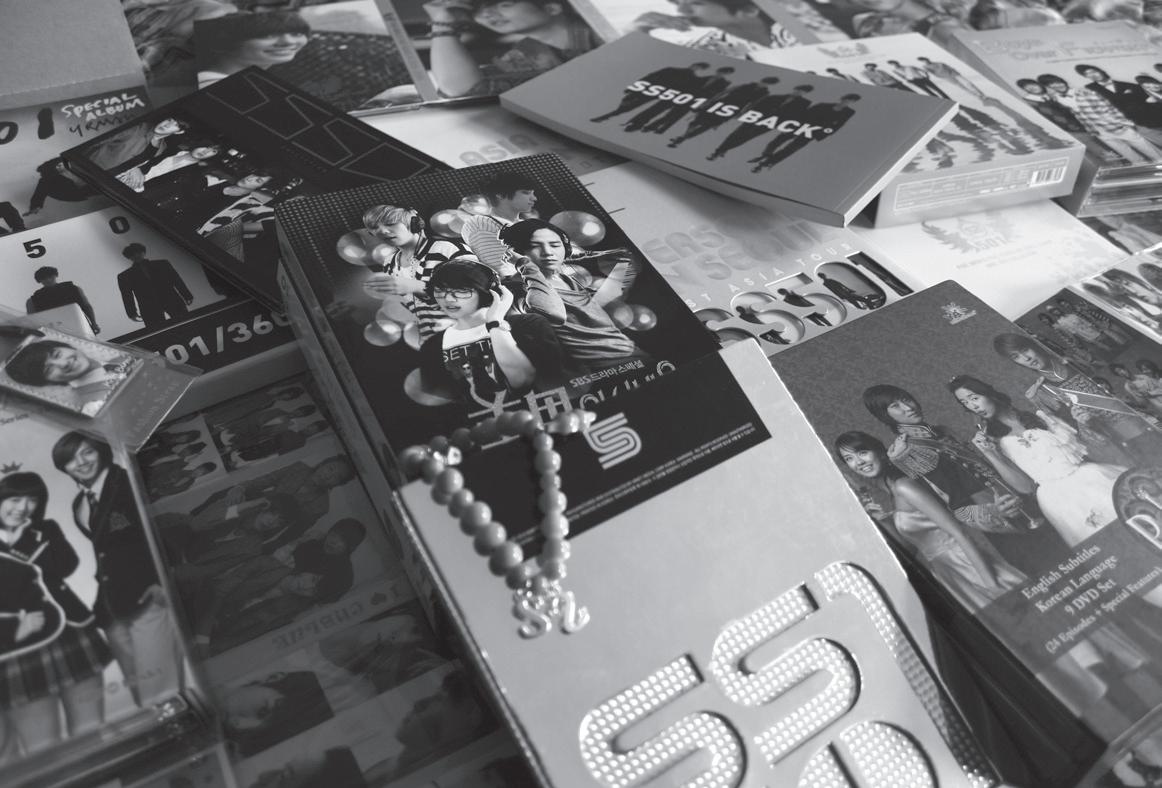
what they’re like, and I think that’s awesome,” Baraan says. Aside from television shows, Baraan also follows her idols online.
There is a Kpop news site that updates international fans on the latest news and activities of the idols called Allkpop, it is like TMZ exclusively for Kpop. The website helps jump start the hearts of international fans.
Being a Kpop fan is not only for the idols. The fans also gain friends as they share the same interest. Every Kpop group’s fan club has an official chat room, where the fans get to meet and chat with others that also like the same things. Although there are good sides to friendship and most people like more than one band. Rivalries cannot be avoided. The boy bands have different fan clubs that have a special name and colors that they acknowledge. In the chat room sometimes other fans
come to bash and take it to a more personal level.
Fans from the Kpop world have different stories on how they found this world. Baraan stumbled upon the world of Kpop while babysitting a toddler who was obsessed with a Korean drama, “Boys over Flowers”.
“[The toddler] would watch it the whole time I was taking care of her,” Baraan says. “She wouldn’t be able to fall asleep and nap without hearing one of the ballad theme songs from the show.”
Baraan could not understand a single word, but was curious.
“I ended up Googling it and watching the show online with English subtitles,” she says.
She loved the characters of the drama especially the one played by Kim Hyun Joong. “I ended up Googling him as well and came to find he was in a boyband, “SS501”. They were the ones who got me curious about the rest of the Kpop world,” Baraan says.
For fans like Baraan, Kpop music quickly become a lifestyle. Even though Kpop is primarily a passion overseas, it continues to melt hearts like Baraan’s here in the United States one song at a time.
“Kpop is just catchy and their lyrics have real meanings.”
KPOP websites: » Similar to Ebay, Yesasia.com offers most Korean Pop and Drama merchandise. International Shipping is available. » Kpopflash.net allows a live stream for fans to watch weekly performances of their idols.
–Valerie Baraan
Baraan shows off her collection.
Pop Love–
A corporate burn-out turns his passion for toys into a paying gig

The biggest kid
23
Story by Coburn Palmer
Photos by Amber-Rose Kelly
It’s a brightly lit toy store on a Saturday morning. Kids ride their bikes up to the front door and come inside to play pinball. It’s a family store, “where kids can bring their adults.”
Behind the register stands
Dave Levy, six feet tall in his torn black jeans, black boots, T-shirt, dark sunglasses and shoulder length hair tied into a ponytail. He is joking with one of his regular customers about his batting style and waving to the kids who have just come in to play on his antique pinball machines.
Behind him on the wall are autographed pictures of such famous people as Bo Hopkins, Barbara Eden, Bob Wilson, Greg Townsend and Jim Palmer. On the shelf behind the counter sits Levy’s personal collection of retro toys and advertising icons.
“This store is cool,” says one of kids.
Owning The Big Kid on Burbank Boulevard in Sherman Oaks for the past six years is Levy’s passion and has been his dream come true. Before opening the Big Kid he had a lengthy career in magazine sales but was miserable.

“I was a corporate burnout. I did a 23-year sentence in corporate America,” says Levy.
Wandering around the store customers can check out the life size “man in the moon” mannequin next to the Schwinn bike or check out the baseball cards and Garbage Pail Kid cards in the glass display case as Levy chats them up. They can wander through the store checking out the GI Joe and Star Wars action figures they used to play with as a kid or stop and stare at the lava lamps next to the old fashioned TV playing a Smurf’s video.
“I love their reaction when they first walk in the door like, ‘wow’,” says Levy.
A Star Trek oil painting adorns a wall next to a War of the Worlds poster, alongside a Jetsons watercolor. Walking around the store customers’ notice the Mickey Mouse
shirts for sale next to the Beatles and Where the Wild Things Are shirts. Kids play with the old-fashioned pinball machine and Gumby
figurines.
A speaker next to the register comes to life.

“Steve party of three.”
“Steve party of three,” repeats Levy somewhat louder.
The Big Kid partners with Nat’s Early Bite, the restaurant next door. Levy provides a comfortable living room waiting area for Nat’s customers and Nat’s encourages customers to browse through Levy’s store while they wait.
Levy credits his unusual style of business for keeping his store going in tough times. Along with partnering with Nat’s and maintaining a family environment in his store, Levy also sells his products in unique ways. About a third of the store is on consignment. He rents out space to other collectors who sell their wares through him. The rest of the store sells products in a more conventional way. Some of the toys are actually antiques and the rest are reproductions that are still being manufactured, like yo-yo’s and chattering teeth.
He works with a small staff to keep costs low. “We’re lean and























































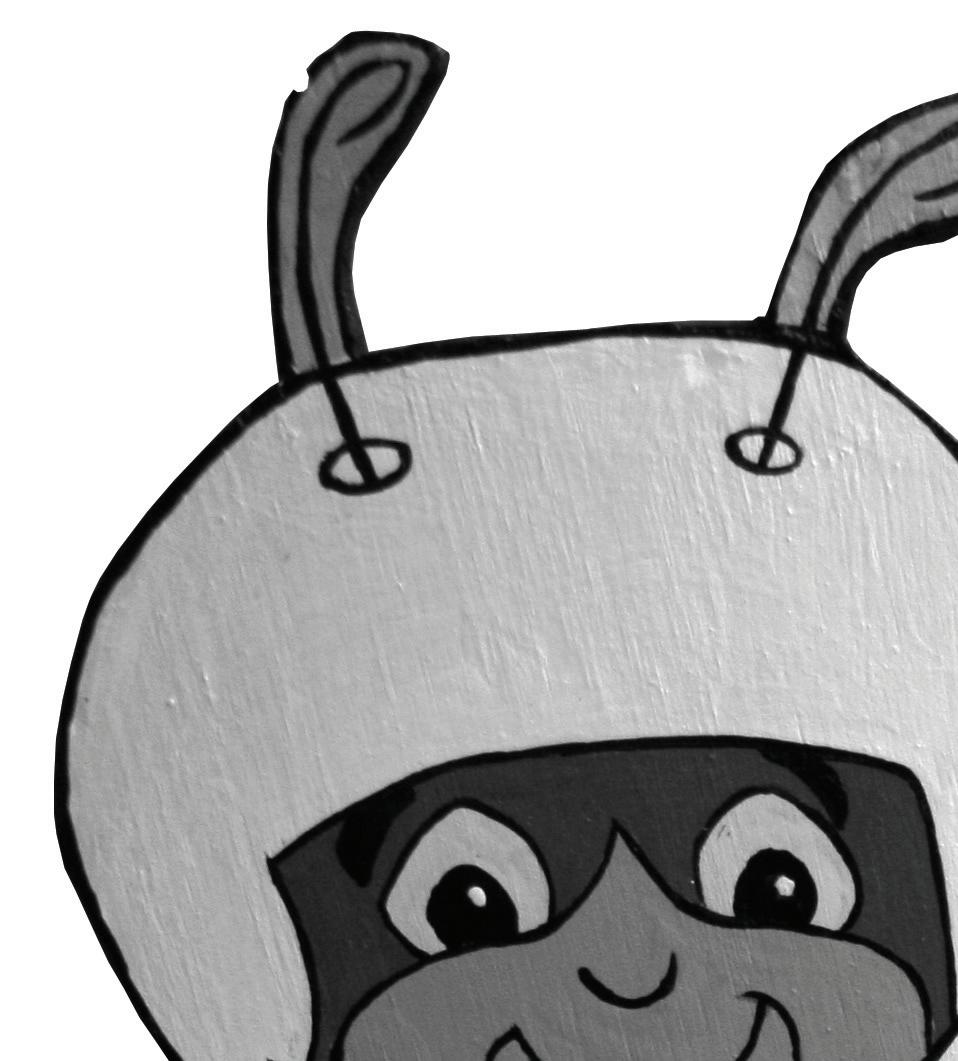
mean,” Levy says. He only has three full time employees with a couple part timers. It’s better than having a lot of part timers and a manager, he maintains.
His employees are passionate about his store too.
“[This store is about] reconnecting people with things they had when they were kids,” says Jill Procia. “They can smell or taste the stuff they grew up with.”
As the economy has declined Levy has noted a change in business. He seems to have more customers ringing more transactions through the register but at lower amounts. This has caused Levy to change the style in which he does business. Along with big-ticket items he also carries much smaller and less expensive collectibles like trading cards and figurines which go for as low as two or three dollars.
“People that enjoy this type of stuff are special warm people,” says Levy of his customers.
Levy keeps his store fresh and new to keep people coming back. The Big Kid is constantly changing. Displays get moved frequently and new toys with a retro feel are always being brought in.
“Its like a giant puzzle that’s never completed,” says Levy.
“[This store is about] reconnecting people with things they had when they were kids.”
the
–Jill Procia
The Big Kid now occupies the retail space that used to belong to the Red Toy. For years Levy and his wife used to eat next door at Nat’s and wait outside in the wind, sun and rain while waiting for a table. They would look over at the toy store next to them and think they could do better.
“Just by looking at this place I thought so much more could be done here. If this guy ever lets it go I’m gonna pick it up,” Levy recalls.
Levy started out as a collector of retro advertising icons. He first became obsessed with George Powell’s puppetoons. Puppetoons were popular advertising tools in the 30’s and 40’s. Later, his passion spread to antique toys.
For years Levy made his own obsessive search for Speedy Alka Seltzer, a red haired figurine holding an Alka Seltzer tablet. He spent years searching through swap meets, garage sales, and antique malls

“Its like you get one and you have to have the next one,” says Levy.
Levy has designed the store to be relaxing and inviting.
The living room waiting area, complete with a custom plastic covered couch is his daughter Danielle Levy’s favorite part of the store because it has an old fashioned family feel to it.
“It’s like stepping back in time even if you didn’t live back then,” she says laughing.

Danielle is quick to point out that the coffee table used to be in Levy’s home.

“He sold it to one collector, and that collector sold it to someone else. Then somehow, he found it and bought it back,” she says with a smile. “Everything in here has a story.”
Danielle especially loves all the old photos of the San Fernando Valley in the 50’s and Stan Cline’s pictures of Las Vegas in “The Early Days.”
“Its like a museum that you can take home with you,” Danielle says.
She remembers working the counter one day and having a family
come in and buy as much Beatles memorabilia as they could get their hands on.
“The kids that come in here are more cultured,” she says.
All of Levy’s customers are unique in their own way and it is this day to day people that has kept Levy positive.
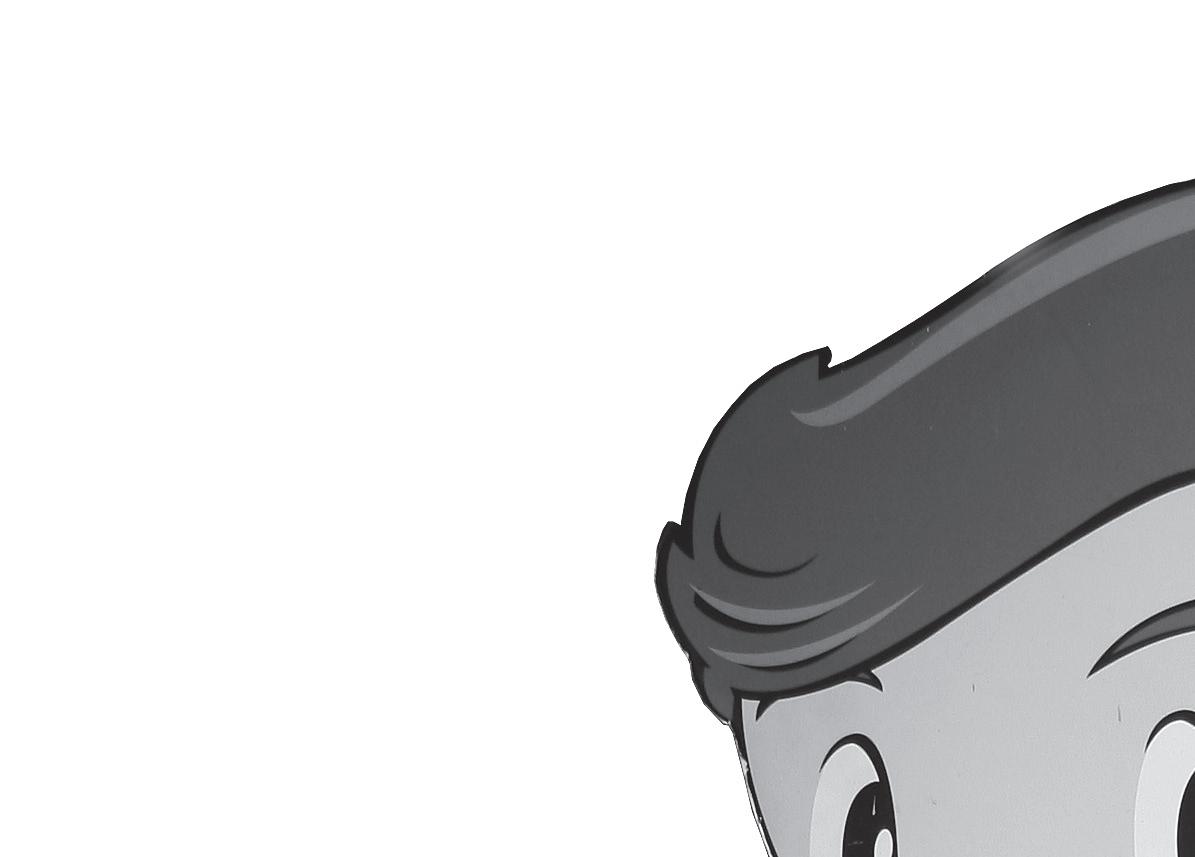
experience of working with

















Living his dream has taught Levy to be positive and maintaining a business with almost no retail background has taught him to be resourceful. Levy has worked hard for what he has but he is the first one to laugh at a joke or smile at a new friend as
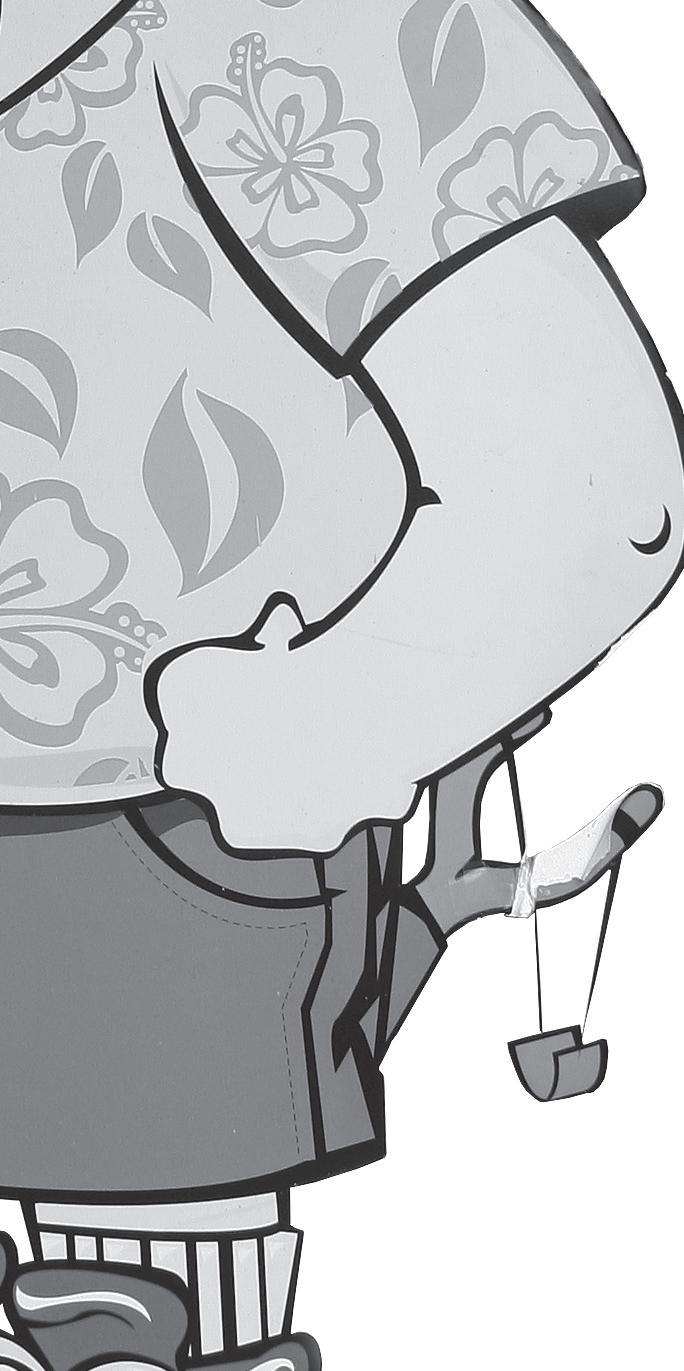

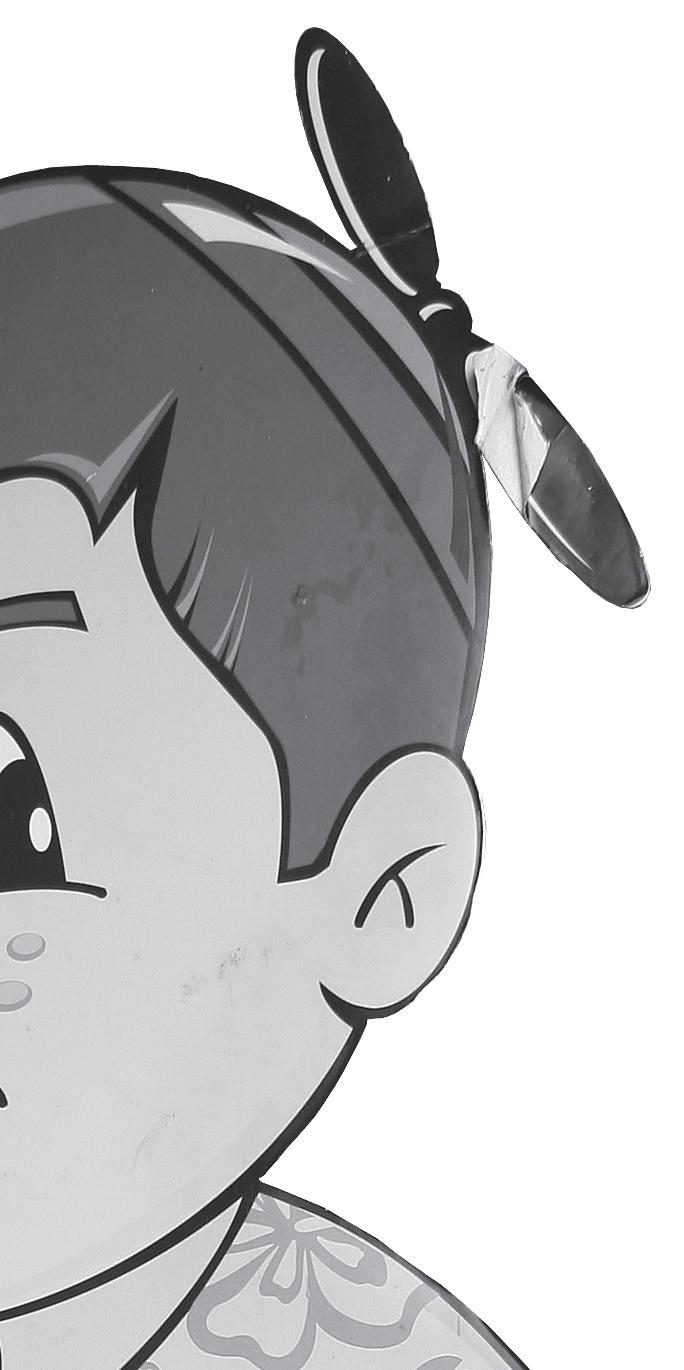
he calls his customers.
“Don’t let the bad times get you down and don’t take the good times for granted,” Levy says with a smile.
“Don’t let the bad times get you down and don’t take the good times for granted.”
–Dave Levy
Sparked with an interest in pets by her high school biology teacher, Stacy Carpio, now has a strong love for working with all types of animals.
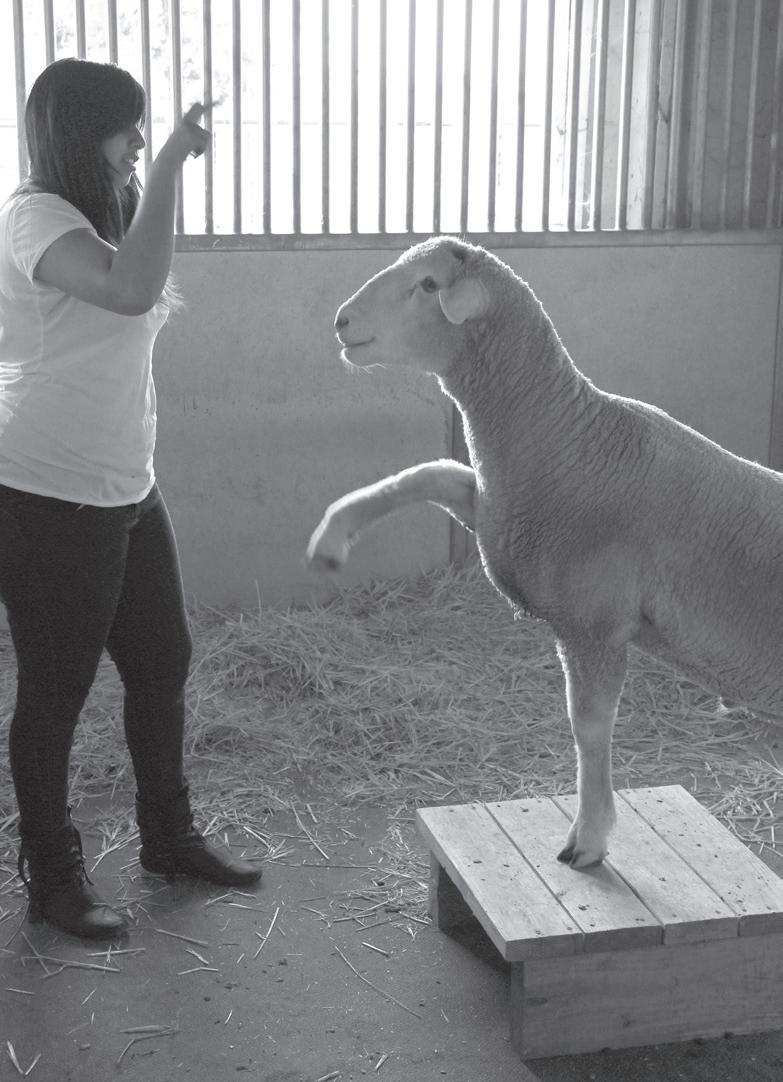
“I remember coming home one day and hearing this little cat meow and I didn’t know where it was coming from, so I spent the whole day looking for it and it ended up being this one small kitten stuck in this little cranny,” said Carpio. “I picked it up and I took care of it and nurtured it back to health. “
That was the main turning point that led her to decide on a career as a veterinarian. She joined the animal science program at Pierce College, and began volunteering at the Pierce farm and started the “Farm Team.” The team gives students hands-on experience working with different types of animals. All-in-all, Carpio has chosen a career that she feels gives her sense of pride and fulfillment that will last a lifetime.

ANIMALS ABOVE ALL

26
One student’s passion “steers” her towards a career in veterinary medicine.
Photos and story by Gary Moratz
Top - Stacy Carpio shows Pierce student Myrna Mukherjee how to use a halter.
Left - Stacy Carpio teaches Cotton how to do tricks.
WAITING FOR MICKEY
Story and Photo
by Denise Jimenez
Apetite young woman wearing Mickey Mouse slippers stands next to her bedroom door. She opens the door to a room filled with Mickey Mouse memorabilia. Her TV has custom-built Mickey Mouse ears. The walls of her room are painted red. On her Mickey Mouse bed sheets are 10 Mickey Mouse stuffed animals. She jumps onto the bed and laughs. She picks up her Steam Boat Mickey stuffed animal and opens her drawers where there are rows of Mickey Mouse shirts of all shapes and colors. She does not see one that catches her eye and closes the drawers.
Still holding onto Mickey, she opens her closet filled with Mickey Mouse dresses and pulls out a navy blue dress that has big Mickey Mouse faces all over it. Smiling with satisfaction she walks back to her drawers and looks through her hundreds of Mickey Mouse necklaces, rings and bracelets and puts on a silver Mickey Mouse necklace that has shining princess cut Swarovski diamonds on it along with the matching earrings, as well as a diamond Mickey Mouse ring. She puts her stuffed Mickey down and crouches to look under her bed to find her Mickey Mouse shoes and then puts them on. She kisses her Mickey goodbye, grabs her Mickey Mouse back pack and then walks out of her Mickey Mouse room.
Since she was two years old, Kimberly
Solorzano, 21, has had the opportunity to go to Disneyland for each birthday and it is the thing she waits for all year long. She and her family are part of the four million people who visit Disneyland each year, according to Disneyland.com. But what makes her standout from the crowd of other Disney lovers is her extended Mickey Mouse collection. Mickey is not just a make believe Disney character, or an everyday mouse; he is her best friend and they are inseparable.
Kimberly, a veterinary technician major at Pierce College, owns hundreds of Mickey Mouse memorabilia including backpacks, tote bags, jewelry (rings, necklaces, earrings, bracelets), notebooks, hats, scarves, shoes, bed sheets, pillows, stuffed animals, video games, hair accessories, glass figurines, calendars, board games, stickers, tattoos, lanyards full of Mickey trading pins, watches and even under garments.
“How could you not like the mouse? Everywhere I am, it is Mickey and Kimmy,” she says. “He is with me on my keys, in my backpack, in my car and at my house.”
Suddenly her phone rings. “Who’s the leader of the club that’s made for you and me? M-I-C-K-E-Y M-O-U-S-E?” rings over and over again.
“And on my phone,” she adds laughing as she answers.
For some this might seem like an obsession. For others it might seem like a hobby
27
“How could you not like the mouse?
Everywhere I am, it is Mickey and Kimmy.”
- Kimmy Solorzano
gone too far. However, for Kimberly, Mickey Mouse is her passion and her lifestyle.
ADDICTION
“Some people fall on alcohol, drugs or smoking, but for me its Mickey. Its my escape and my life,” she says. “I will always be known as Disney Lady and want people to remember the picture I put on Facebook of Mickey Mouse on one knee in his Toontown studio proposing to me.
According to John Updike, winner of two Pulitzer Prizes and author of multiple books such as “Rabbit, Run” and “Rabbit is Rich,” her passion for Mickey Mouse is understandable as he was too inspired by this American icon in the 50’s and 60’s. He also come across the term Mickeyaholic , someone which is addicted to Mickey Mouse, who eats sleeps and breaths Mickey, which is what he would categorize Kimmy as.
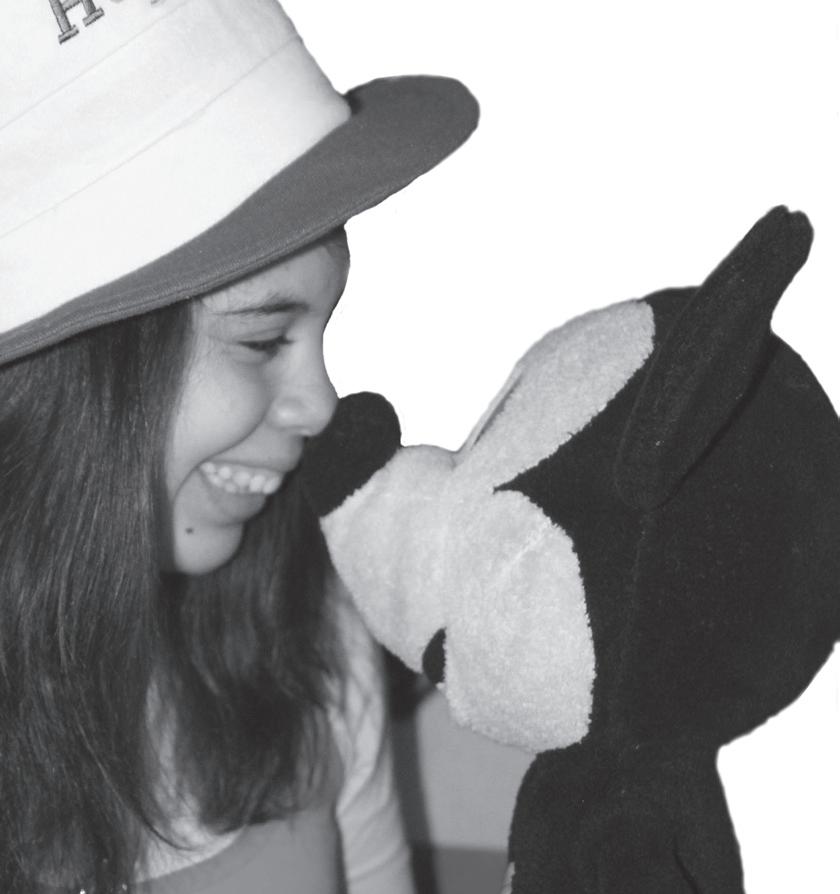
The Mickeyaholic is always triggered by something or someone in particular, according to Updike. Kimmy is no different. Her mom and dad played a big part in the development of her passion for Mickey, but it was Kimmy’s first grade teacher, Michelle Poly who pushed her over the edge and made her the Mickey fanatic she is now. She describes Poly as the No. 1 Mickey Mouse fan. That is until Kimmy got a job and was able to buy everything her heart desired. Just like Kimmy, Poly was Mickey Mouse for Halloween every year and her classroom walls were decorated with Mickey Mouse posters, drawings, pencils and teaching materials.
“I never thought that my little Kimmy would be like me. I have had lots of students who liked Mickey Mouse when they were little, but Kimmy, she is one of a kind,” Poly says. “I remember her bringing a talking Mickey Mouse for show and tell one day to class, and she held it tight and didn’t want to let any of the kids touch it because it was her most prized possession.”
It is my third birthday. My mom and dad are waking my sister and me up. The day has finally come. I am going to meet the one person who I have wanted to meet forever. I will see him standing at the gate in his red shorts with his two yellow buttons, and his long tail and big black ears. I’m going to meet Mickey Mouse.
Memories of all these important Mickey moments linger in her mind and she feels nostalgic when thinking back as well as an urge to go back again and again to “The happiest place on Earth.”
“It’s something I can’t describe. When I arrive it’s the best. I plan the day to my liking and feel free,” she says. “But when I’m about to leave, I get so sad and start counting down the days for my next birthday. It’s just every time is different. Something new happens with my family, funny, exciting or special.”
Mickey Mouse is so important in her and her family’s life as it is part of the yearly routine but it also has been difficult for her to grow up with. Her teenage years, in which most girls date and experience exciting adventures, were spent studying and envisioning the future, but she did not have a boyfriend and
until today does not have one. Her family shows concern but it has to do with the expectations she has of a man and whom she feels will fill her heart. The epitome of the love of her life is not Prince Charming. It is Mickey Mouse.
“My boyfriend will be smart, fun loving, cute, honest, responsible and funny,” she says. “Just like my best friend Mickey Mouse. ”
One family member in particular shows the most concern. Rodrigo Salazar, 21, has grown up with Kimberly and is like a brother to her and feels that it is not healthily for her to have such a passion.
“I can’t stand it when she says ‘I want him to be like Mickey,’” he says. “Kimmy, you can’t have him.”
But no matter what anyone says to Kimmy, Mickey Mouse is the epitome of a man and he will always be there for her like her family.
A COMPROMISE WITH REALITY
Although she is willing to wait for the love of her life, Kimmy does not forget about her present and is on track to fulfilling other accomplishments while going along with her everyday life. She will be graduating in 2012 as a veterinary technician and plans on one day owning her own pet hospital and Mickey Mouse will follow her as well as her mass collection of memorbilia.
“I will one day have a husband who will love me and cherish me like Mickey does Minnie,” she says. “I have faith that if someone was able to create him as a mouse, that a man must really be out there like him for me. I will wait.”
M
“I have faith that if someone was able to create [Mickey Mouse] ... that a man must really be out there like him for me. I will wait.”
The Anatomy of Passion
Deepwithin the center of the brain lies the limbic system which is home to all emotions. It is in this tiny walnutsized area of the brain, where passion first begins.

Dopamine
It is a neurotransmitter or chemical in the brain that triggers the desire and reward mechanism in the brain, stimulating a rush of pleasure.
Anthropologist, Helen Fisher studies gender differences and the evolution of human emotions. She compares the rush of love to the brain to that of the rush of cocaine.
The ventral tegmental area (VTA) in the brain produces high levels of dopamine when a person is falling in love and addicted to a drug. According to the Institute of Neurosciences, Mental Health and Addiction, the VTA is known as one of the pleasure centers of the brain whose role is to reward the body for carrying out vital functions. The happy sensations felt when someone eats their favorite food is the VTA working.
Serotonin
A brain chemical that serves as a mood stabilizer for reducing irritability and depression, according to Mosby’s Dictionary of Complementary and Alternative Medicine. It is important because it helps regulate bodily functions such as emotions, appetite, and sleep patterns.
In 1999, Donatella Marazziti, a professor of psychiatry at the University of Pisa in Italy conducted a study to measure the serotonin levels in the blood of 24 people who said they had fallen in love within the six months prior to the study and obsessed about this person for at least four hours every day. Marazziti then compared the lovers’ serotonin levels with a group of people suffering from Obsessive Compulsive Disorder (OCD) and another group free of both passion and mental illness. The results showed that serotonin levels in lovers and OCD subjects was about 40 percent lower than those in her normal subjects.
Studies such as Marazziti’s have helped researchers connect low serotonin levels to the obsessive thinking experienced when falling in love.
Story by Helen Ramirez
29
Photo Illustration by Anibal Ortiz and Joseph Kukuczka
Find what moves you

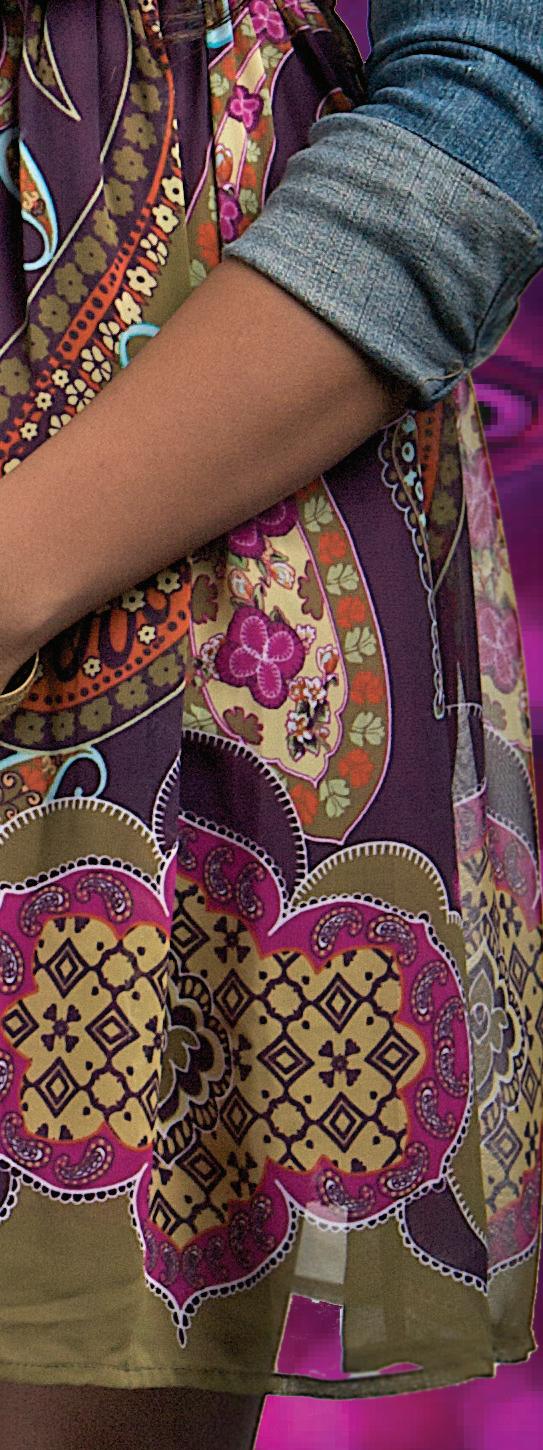
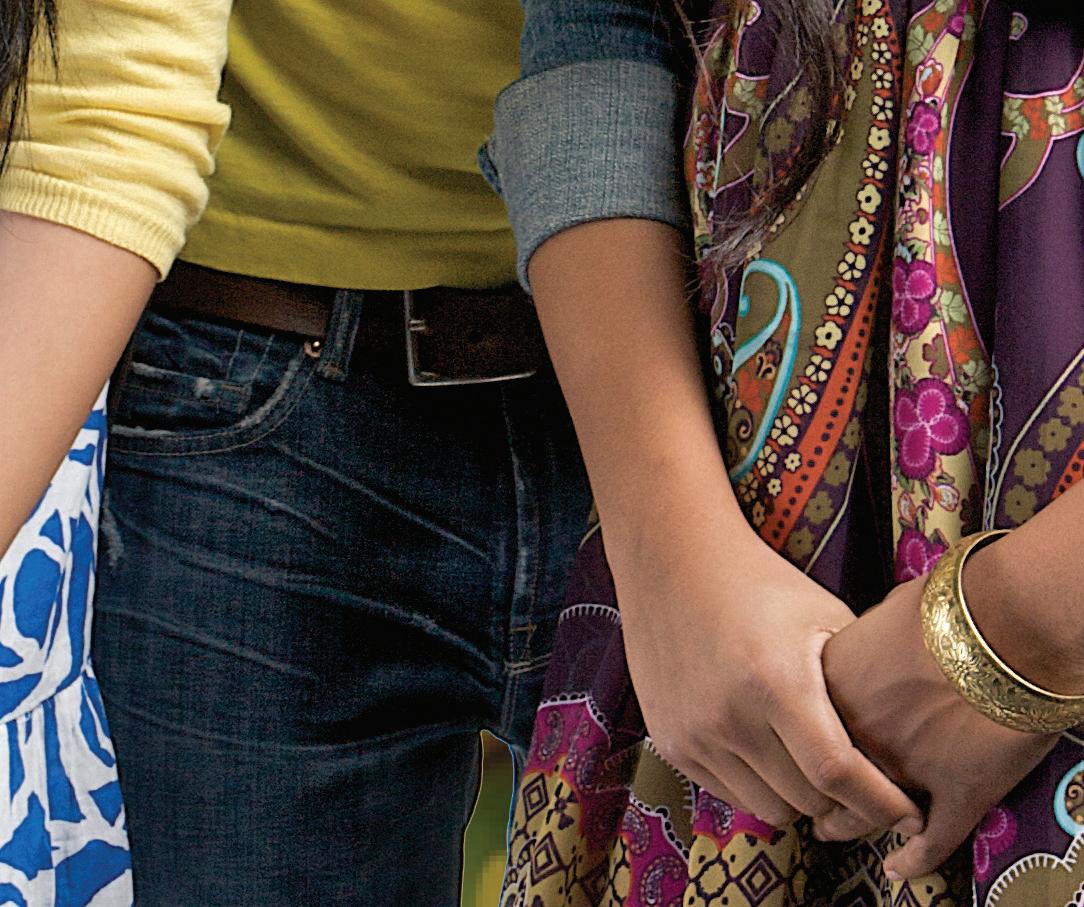



It’s

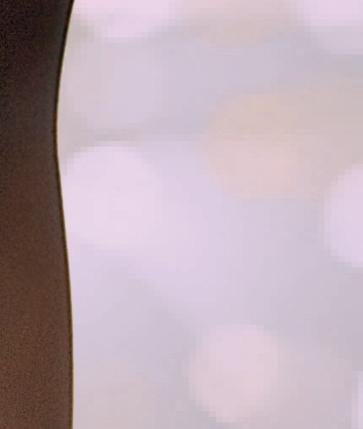


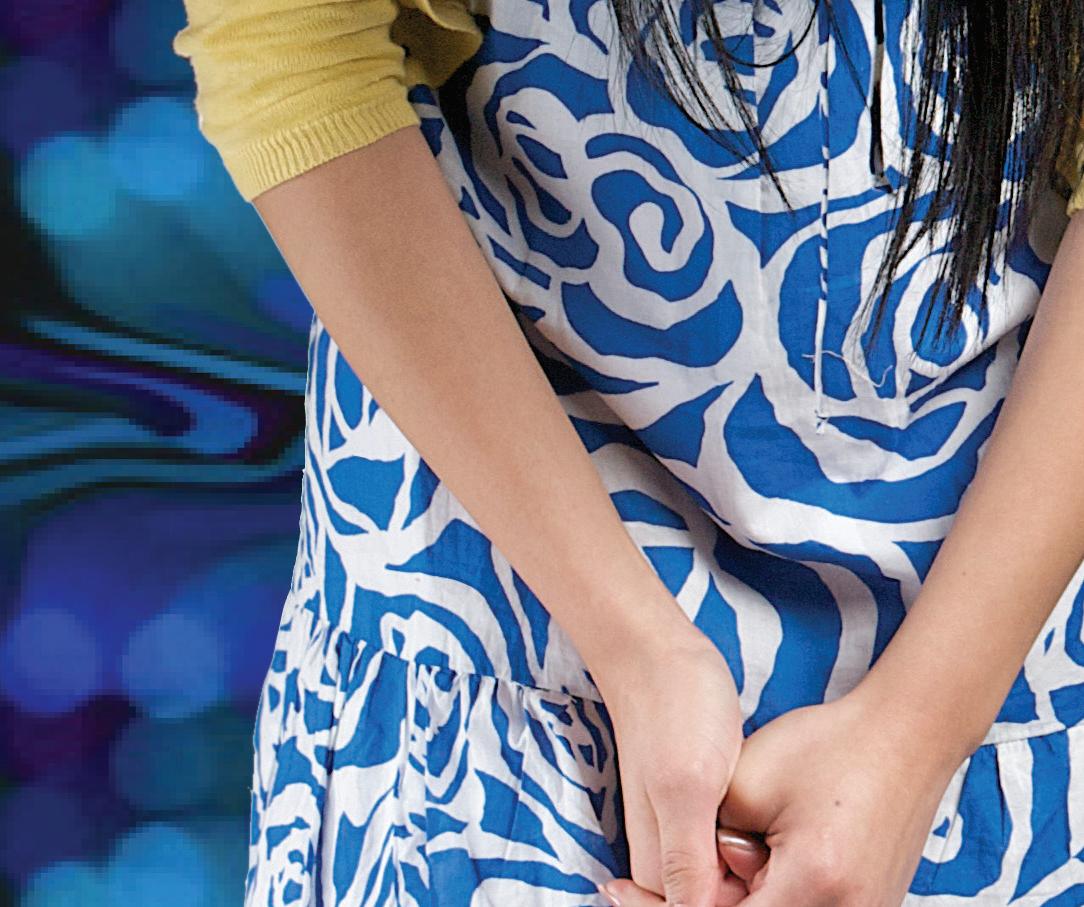

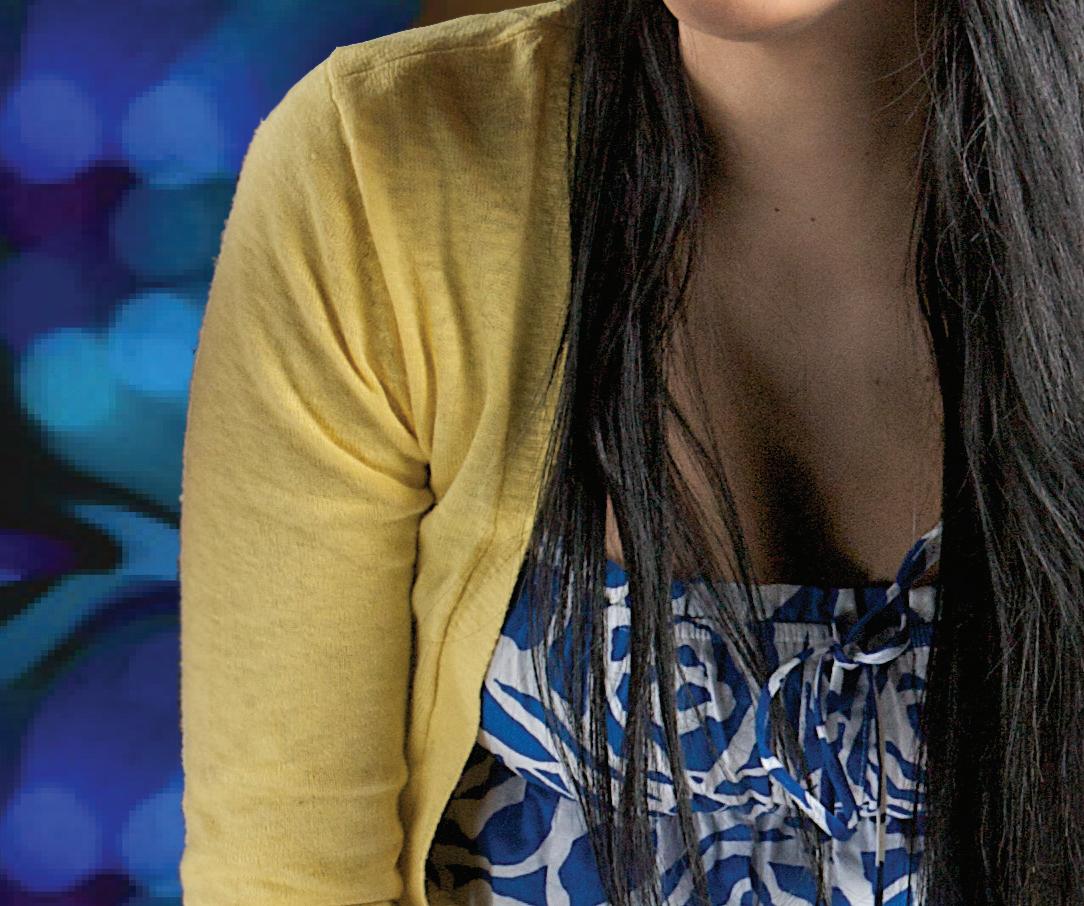

Pierce College

www.facebook.com/PierceCollege www.piercecollege.edu
different for everyone.
starts right where
It
you are.
182 majors in 92 disciplines
Offering

more online www.thebullmagazine.net Get a latté









 Yell Leader—LARS members switch off box duty to lead cheers.
Yell Leader—LARS members switch off box duty to lead cheers.






















































































































 The interventionist, Kristina Wandzilak, sent Annie to Axis residential treatment center in Palm Desert to get
The interventionist, Kristina Wandzilak, sent Annie to Axis residential treatment center in Palm Desert to get




























 Story by Kori Kim
Story by Kori Kim





 Photos by Joshua Cowan
Photos by Joshua Cowan


































































































